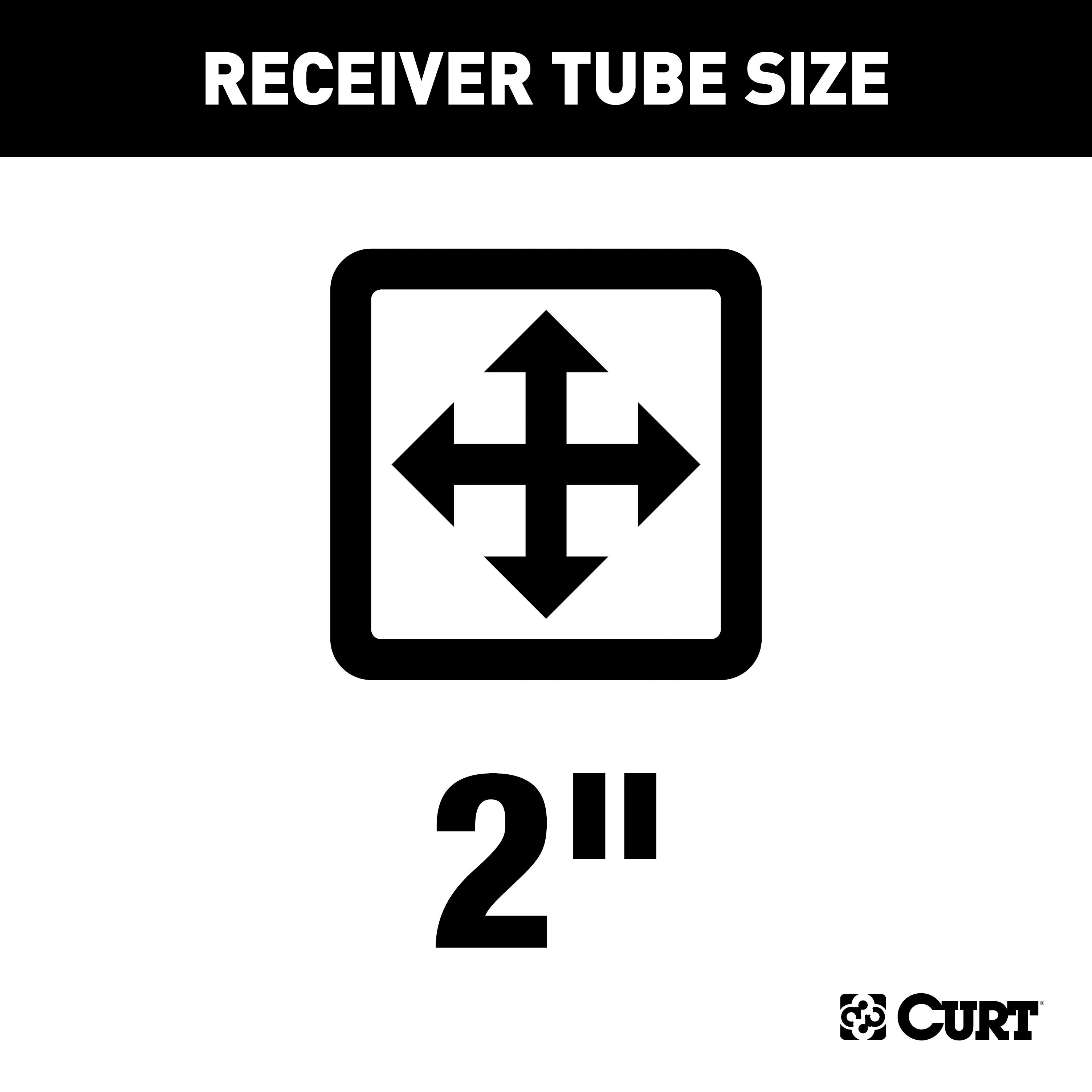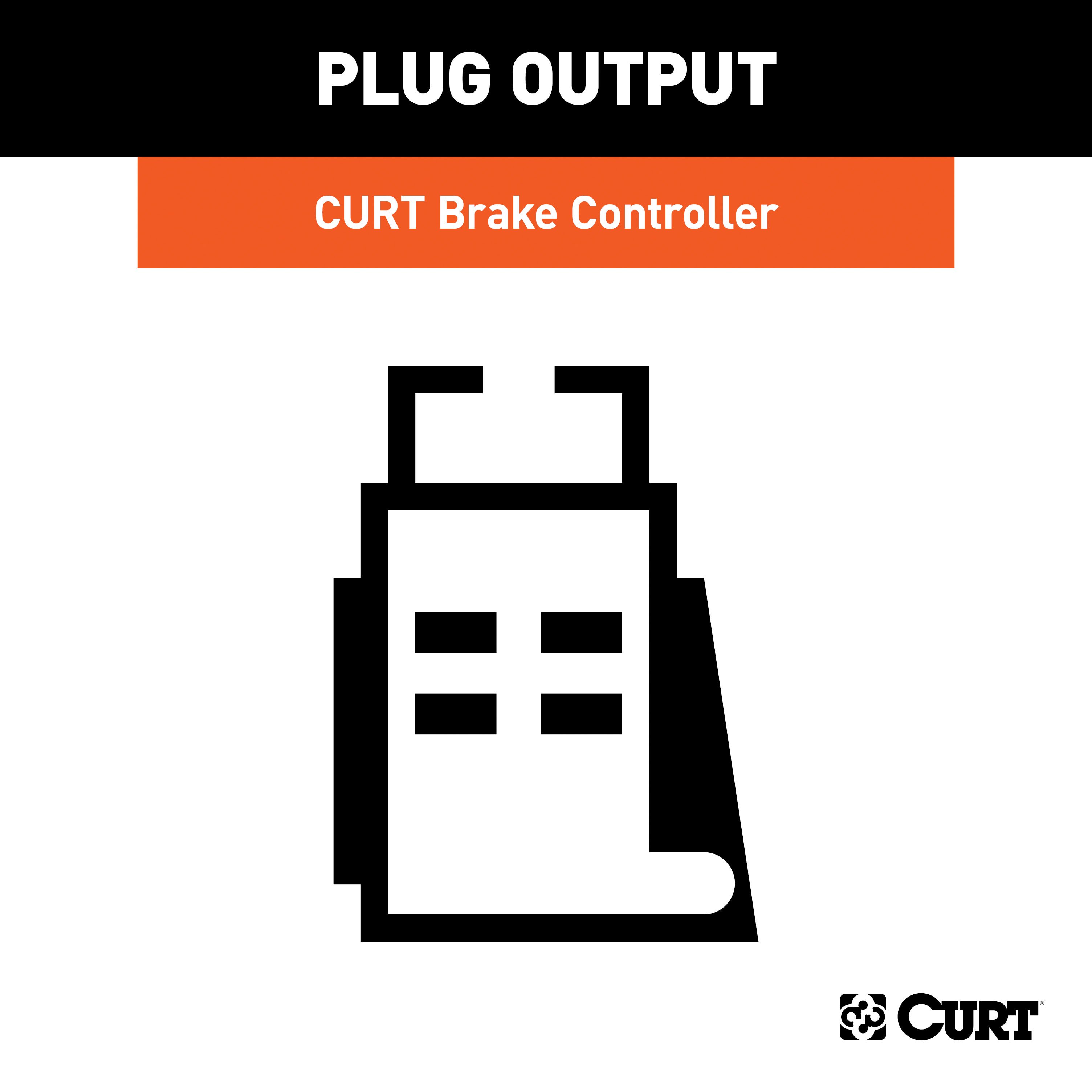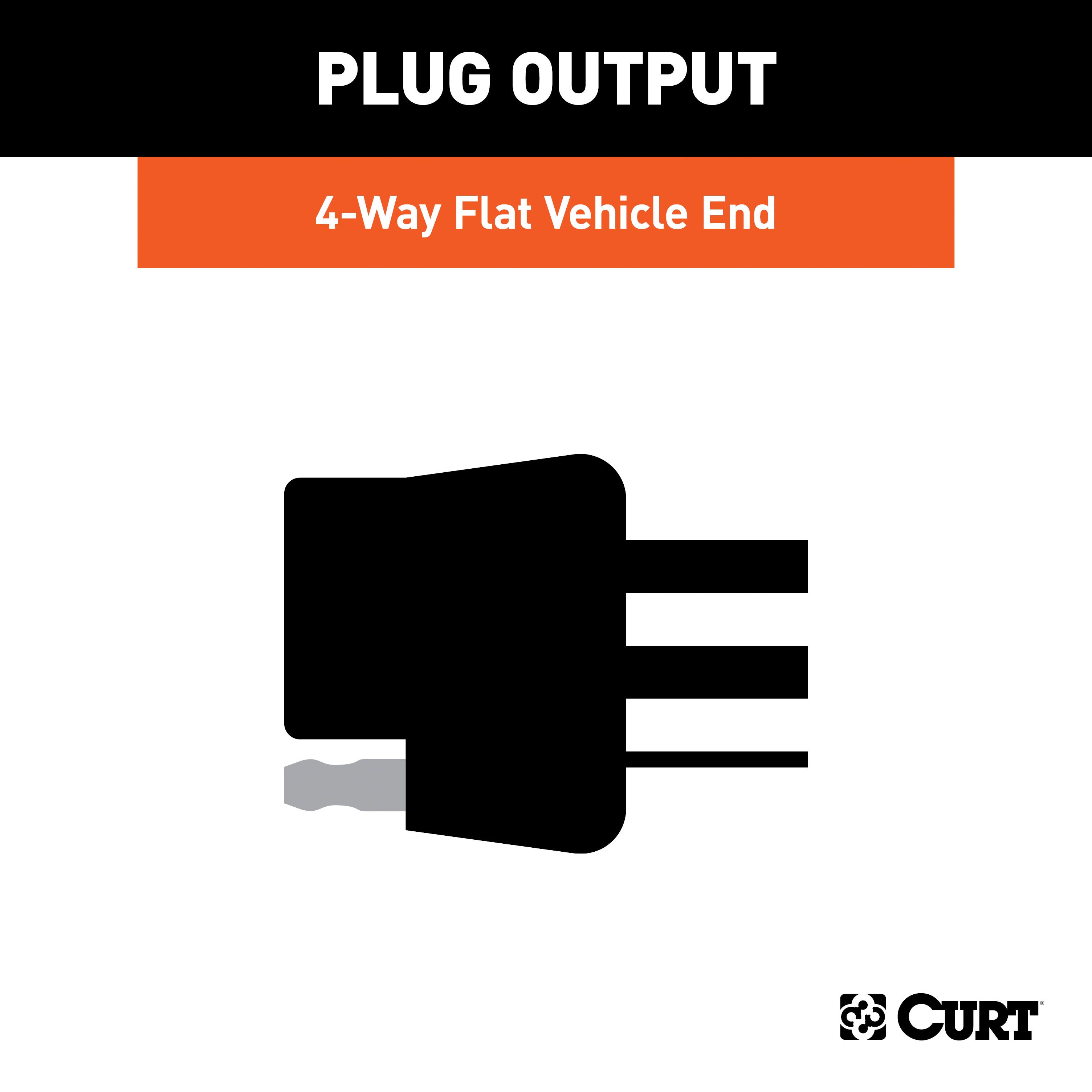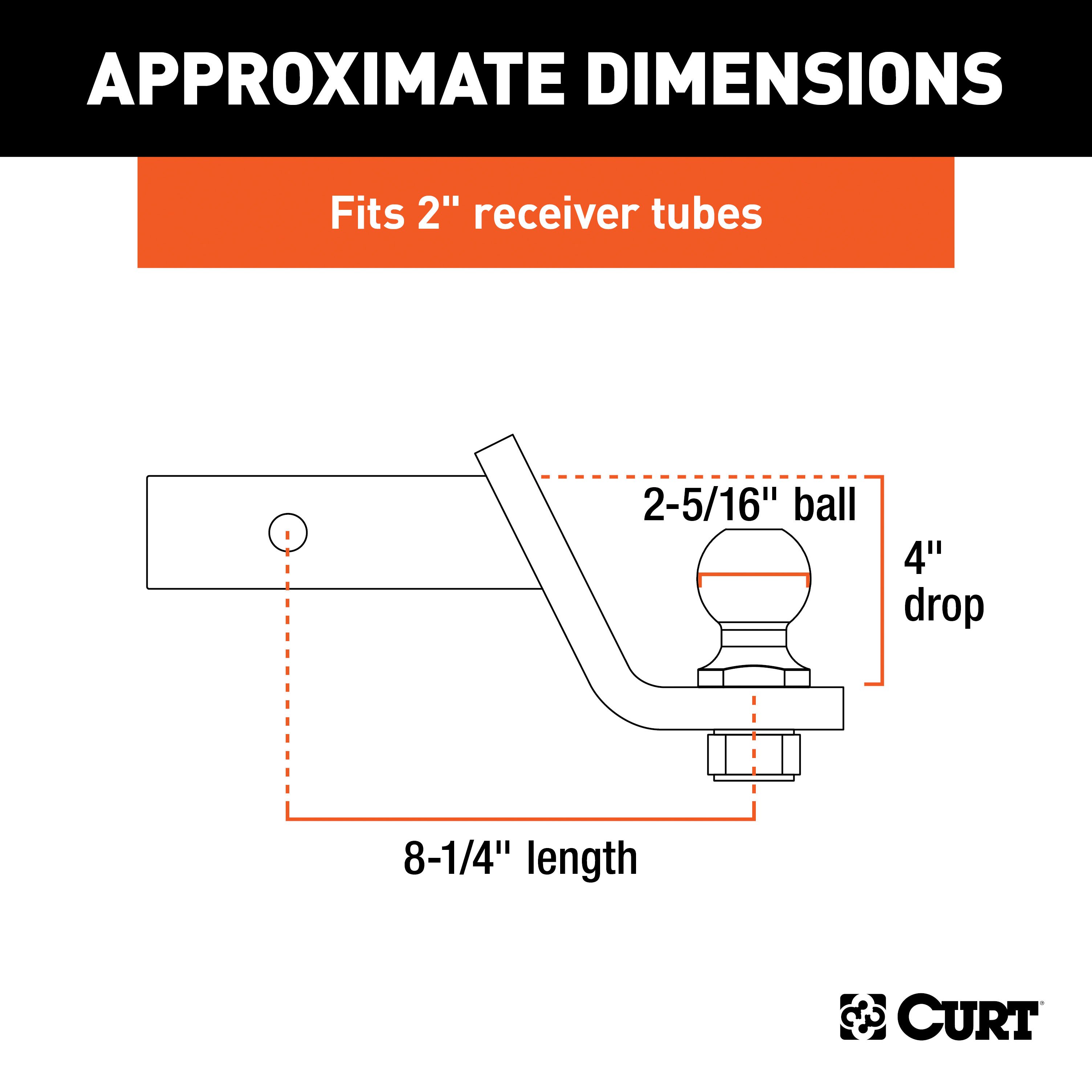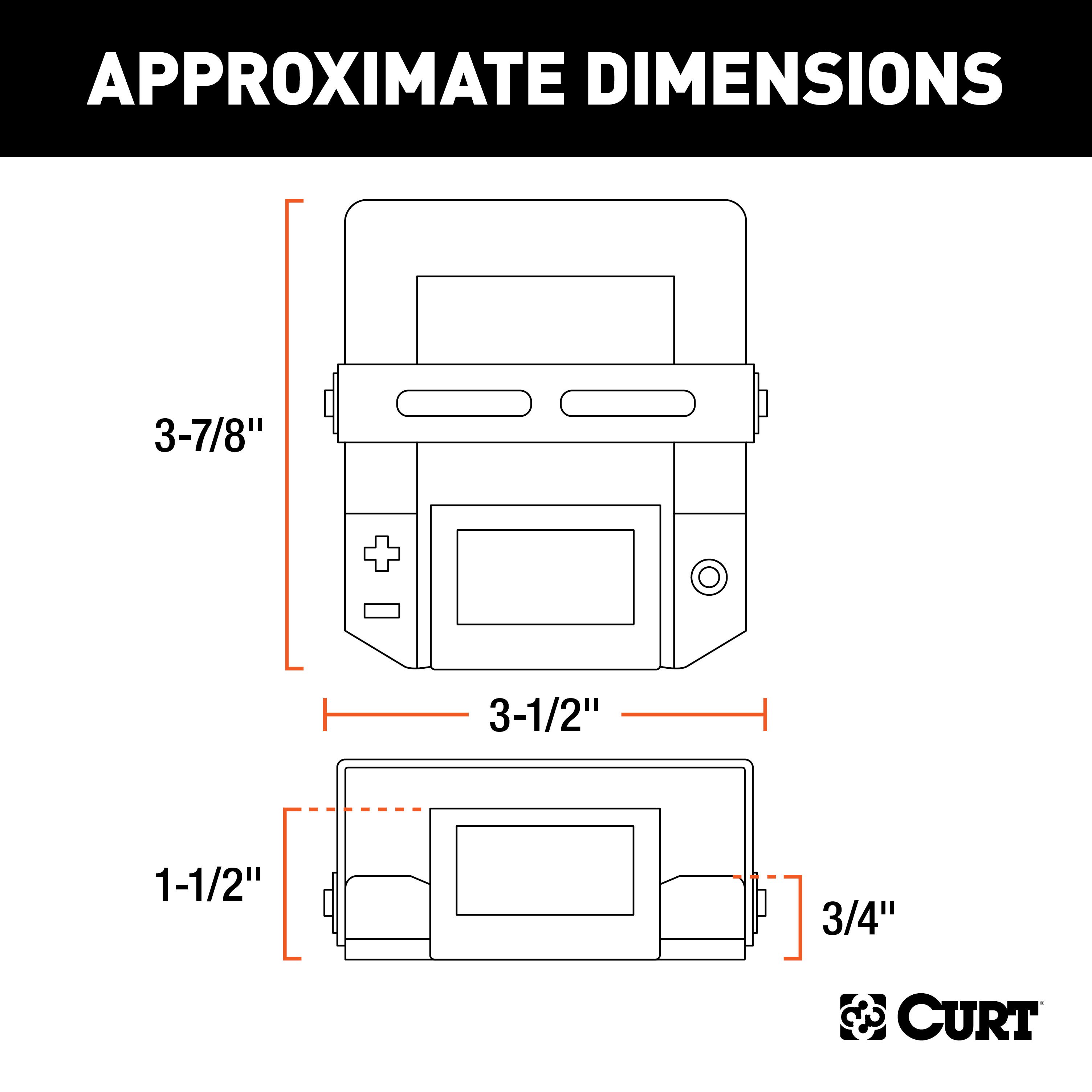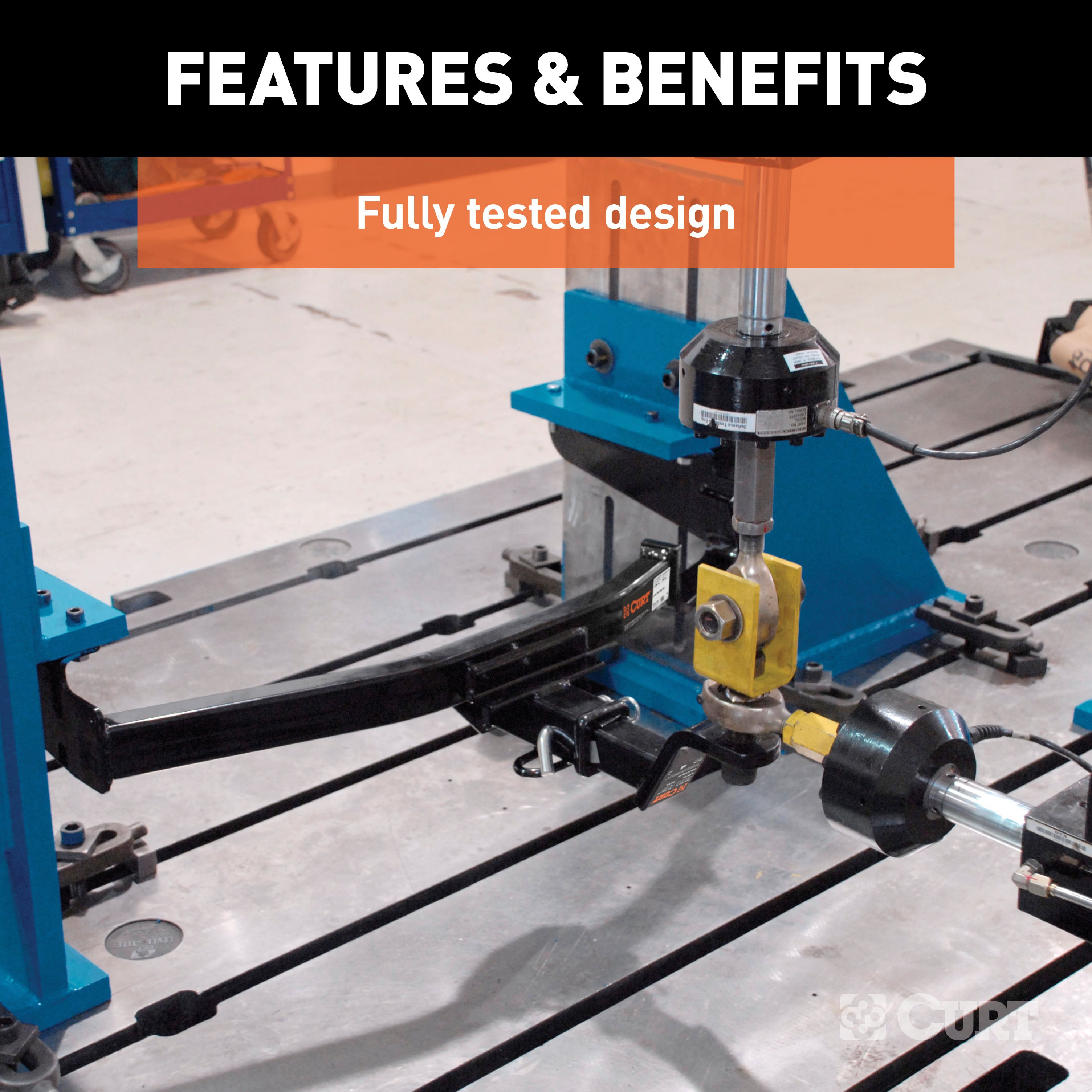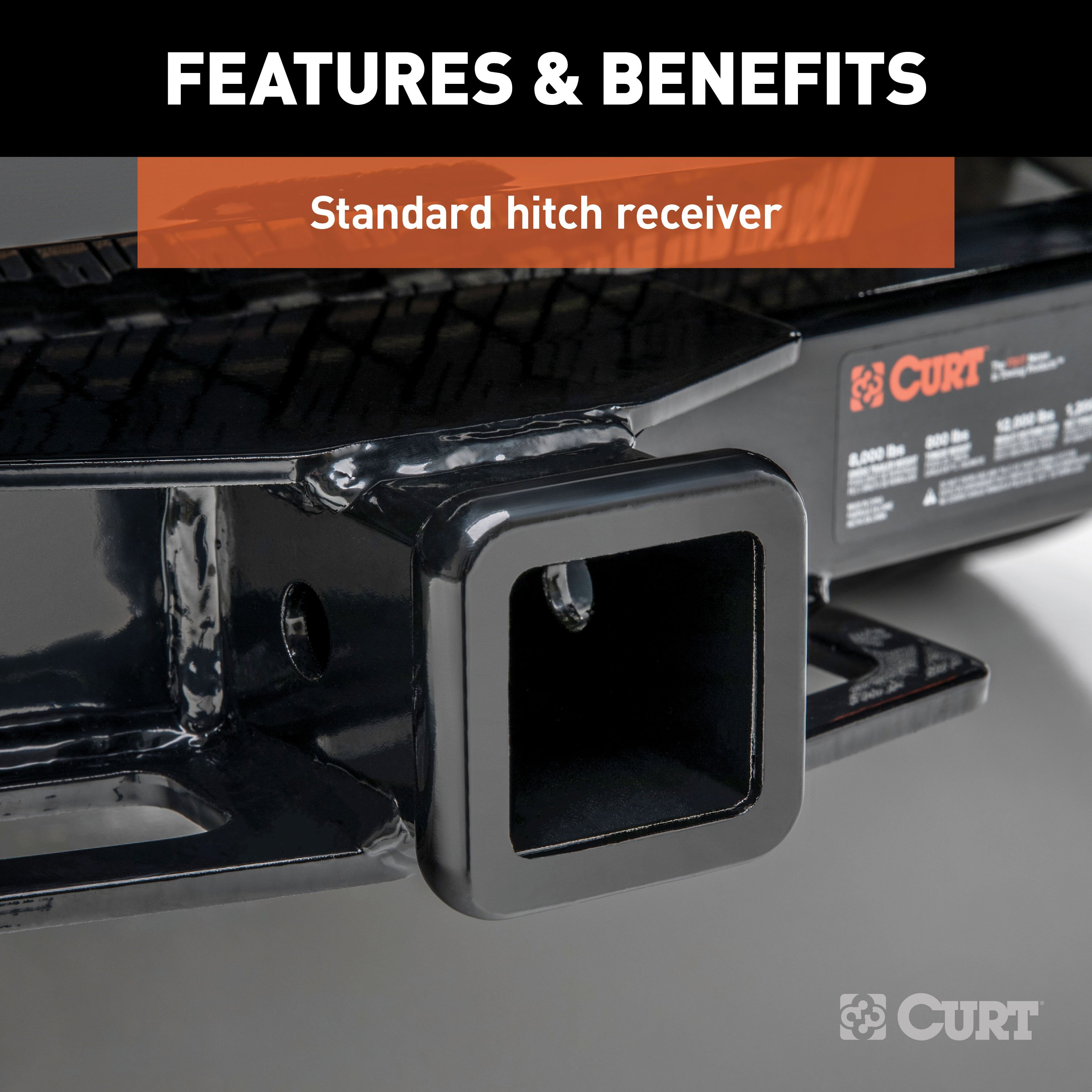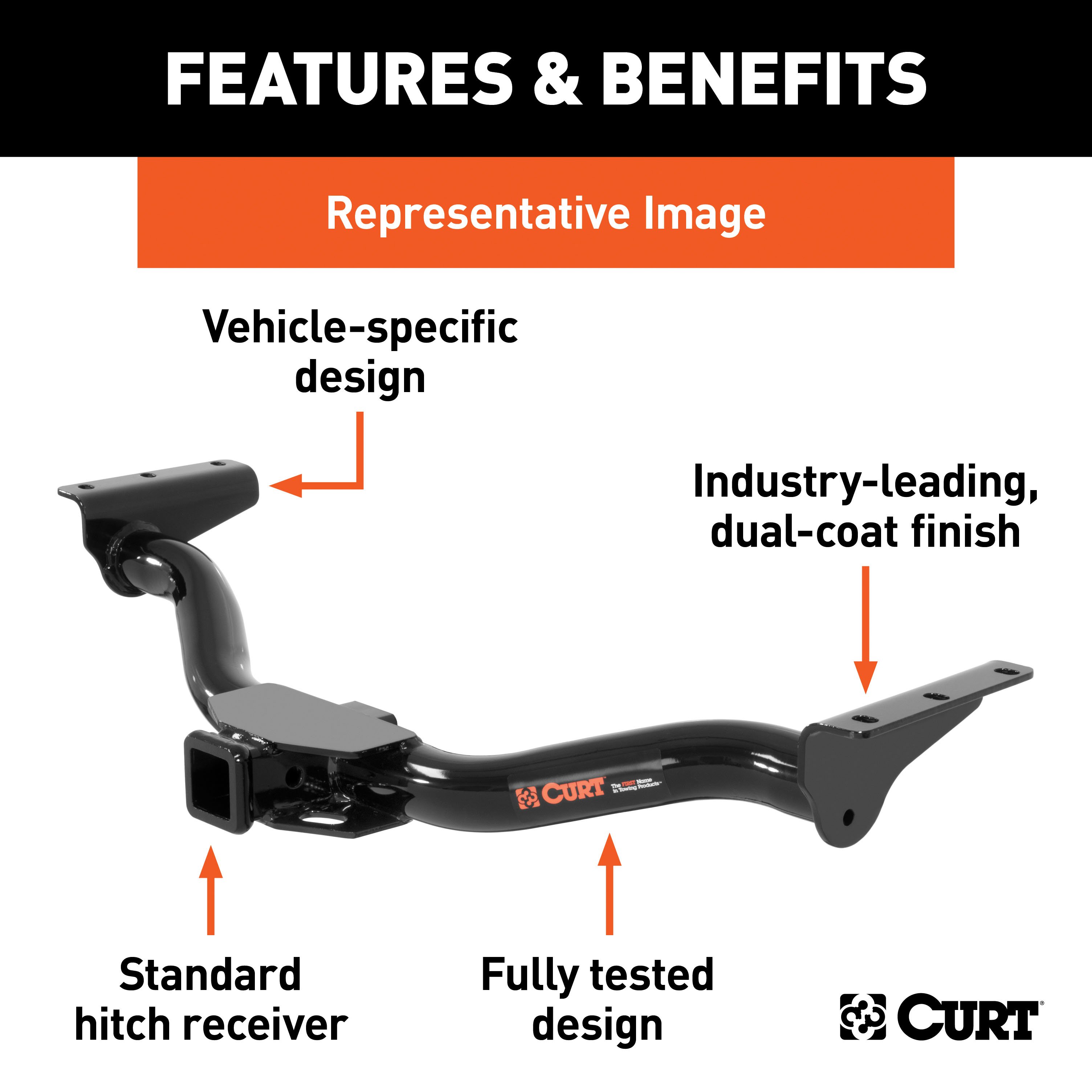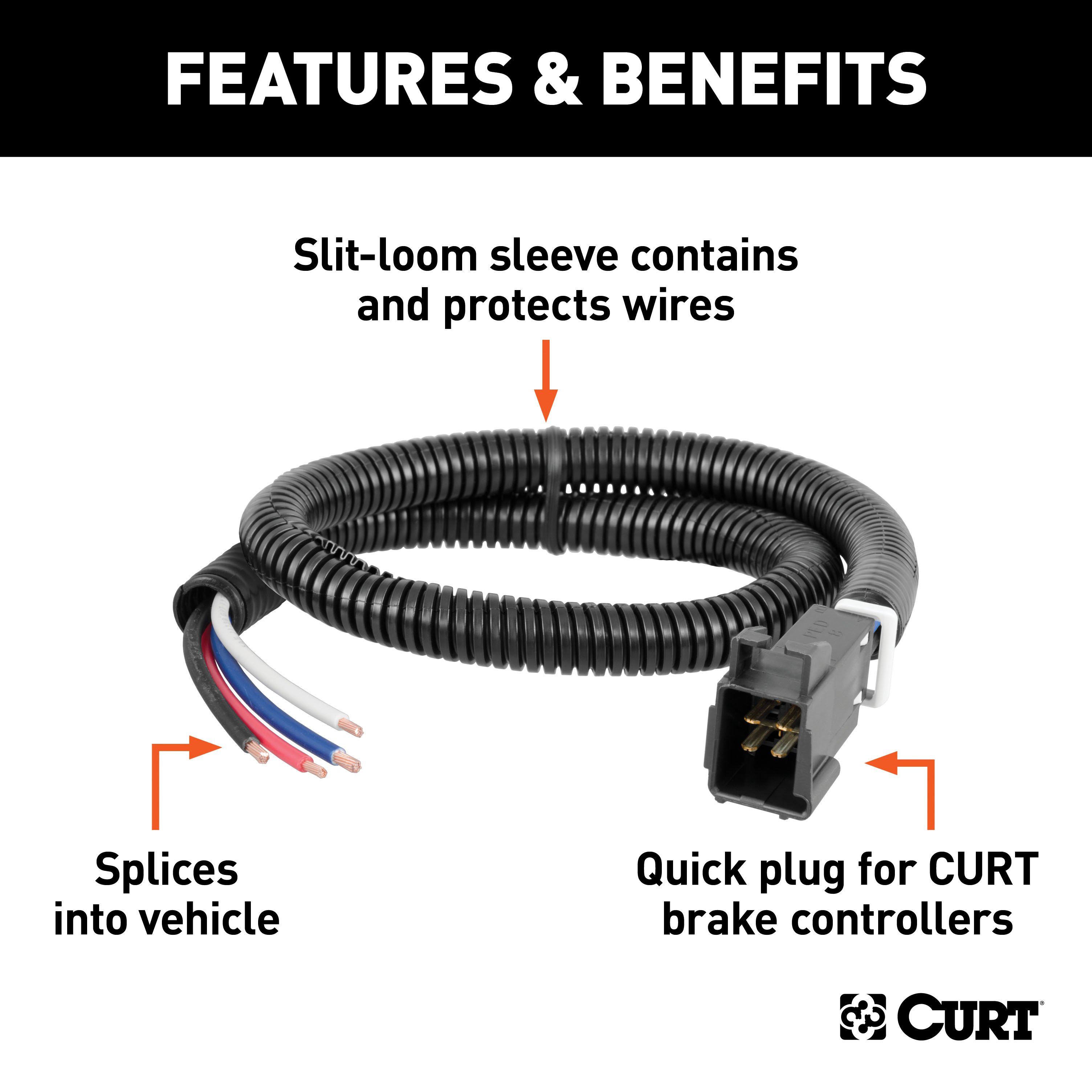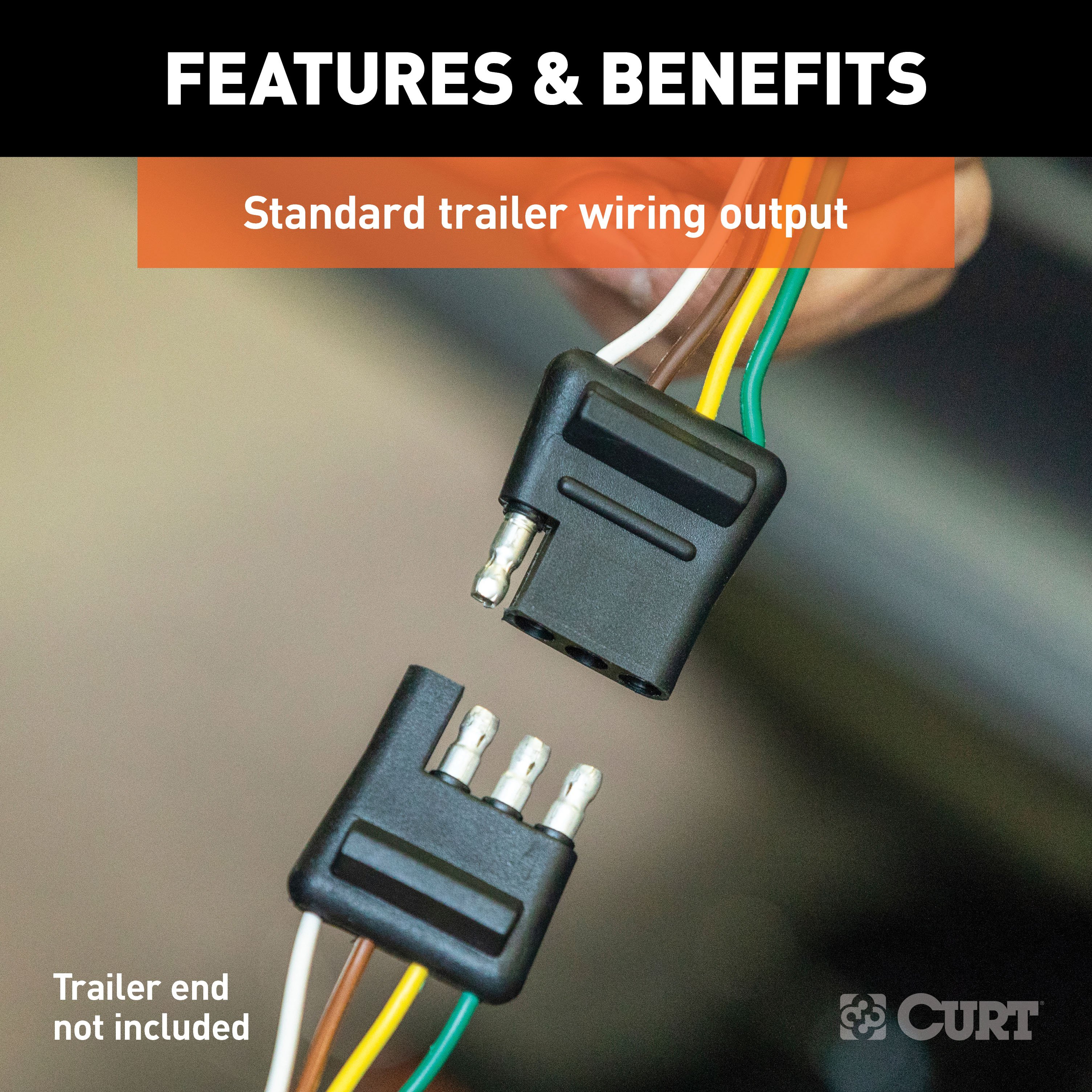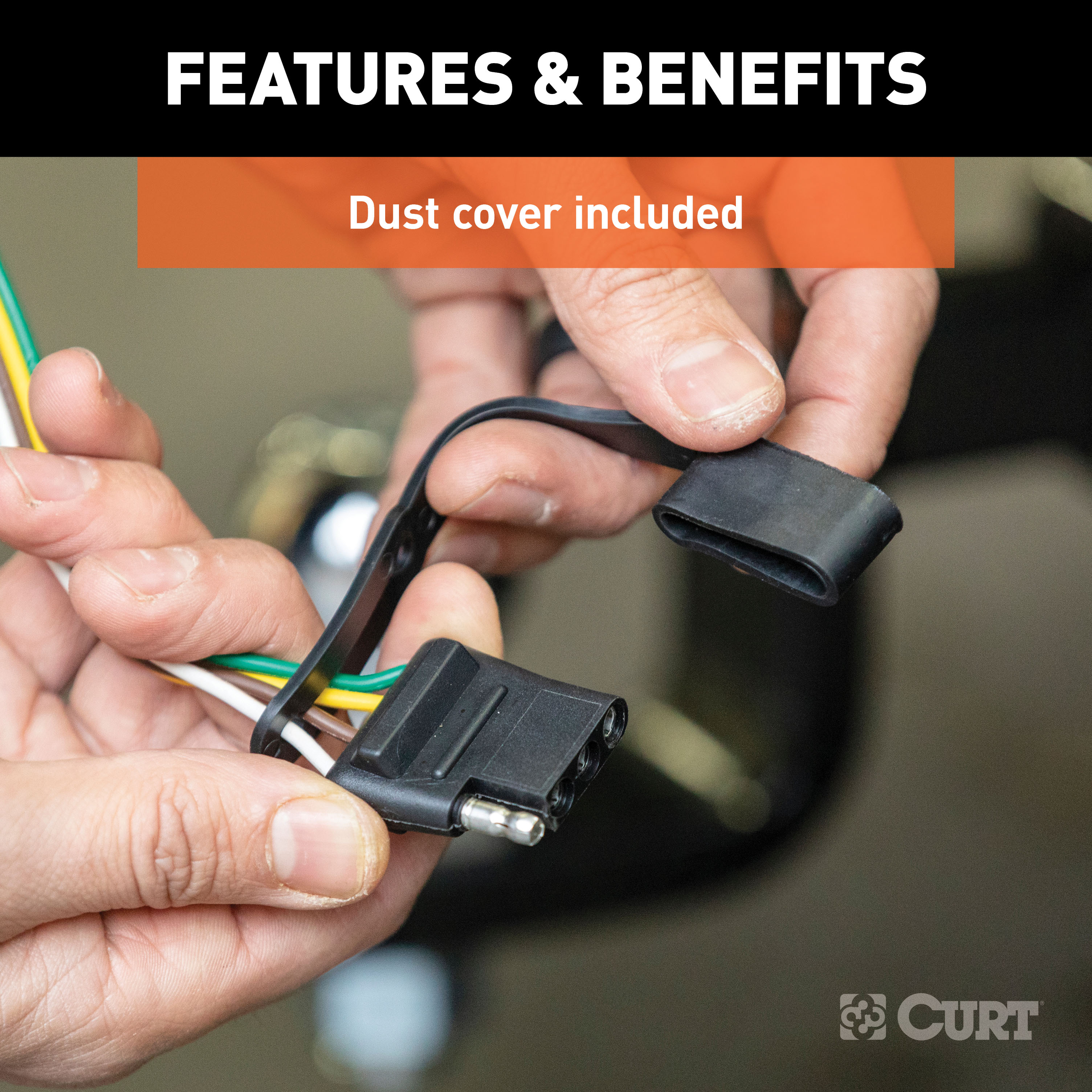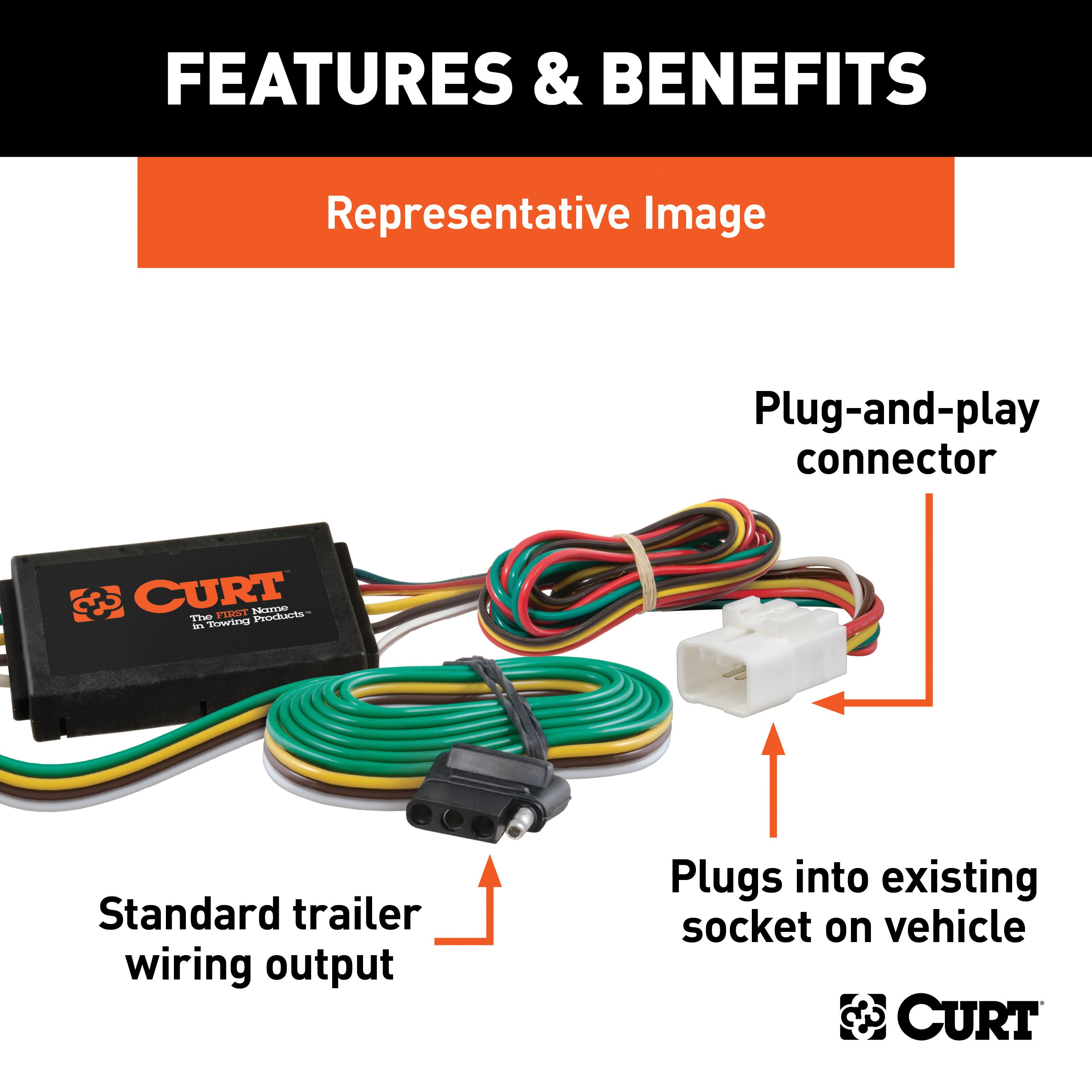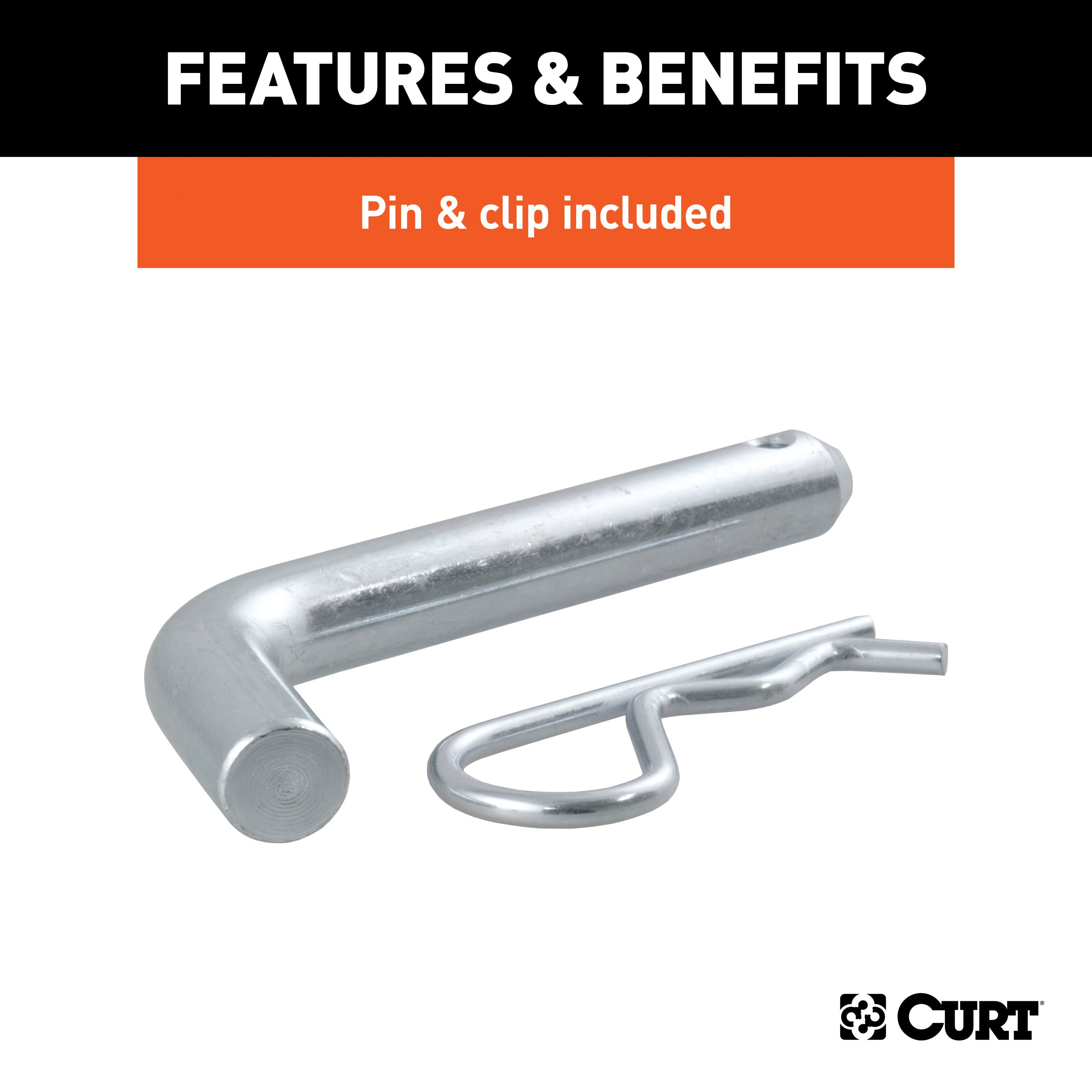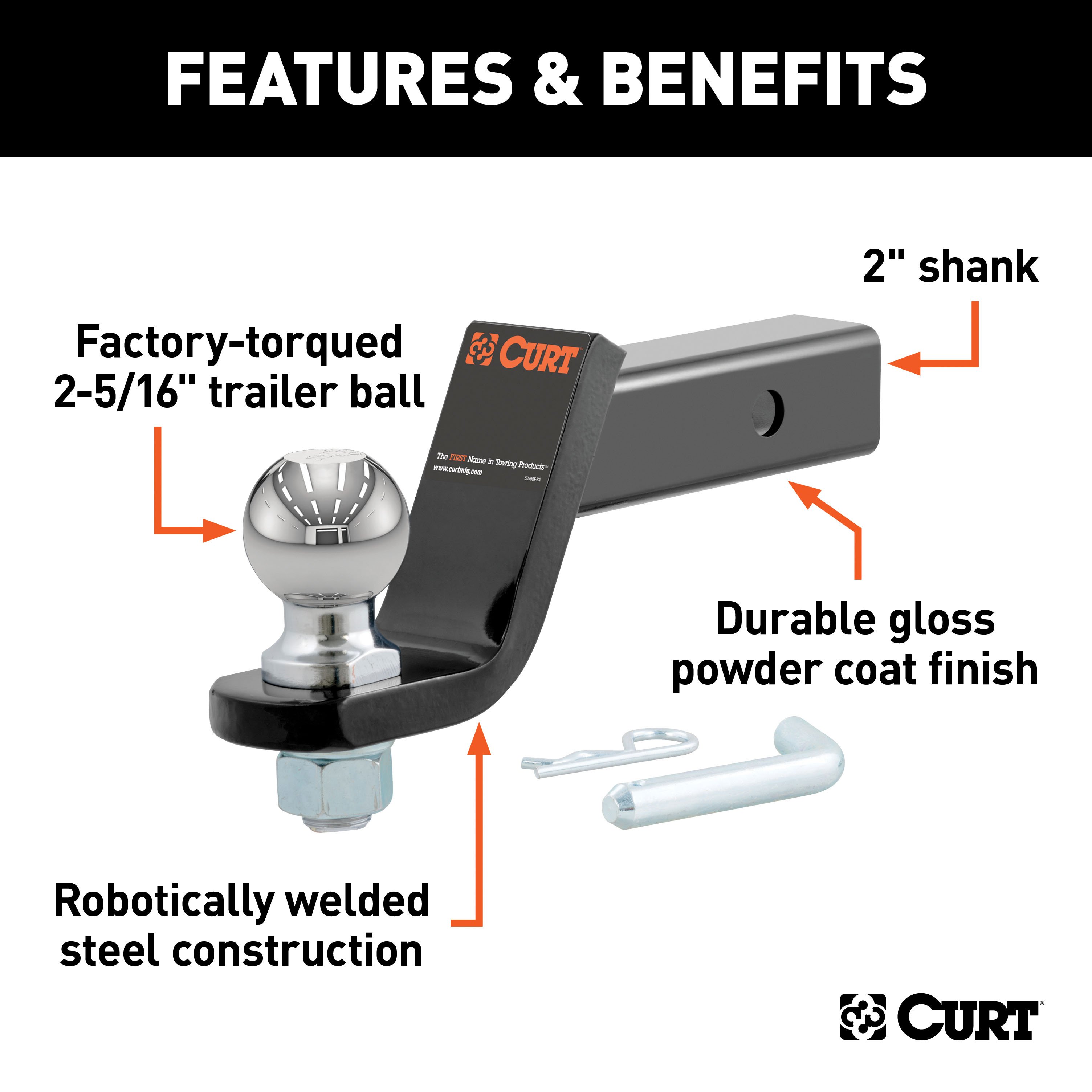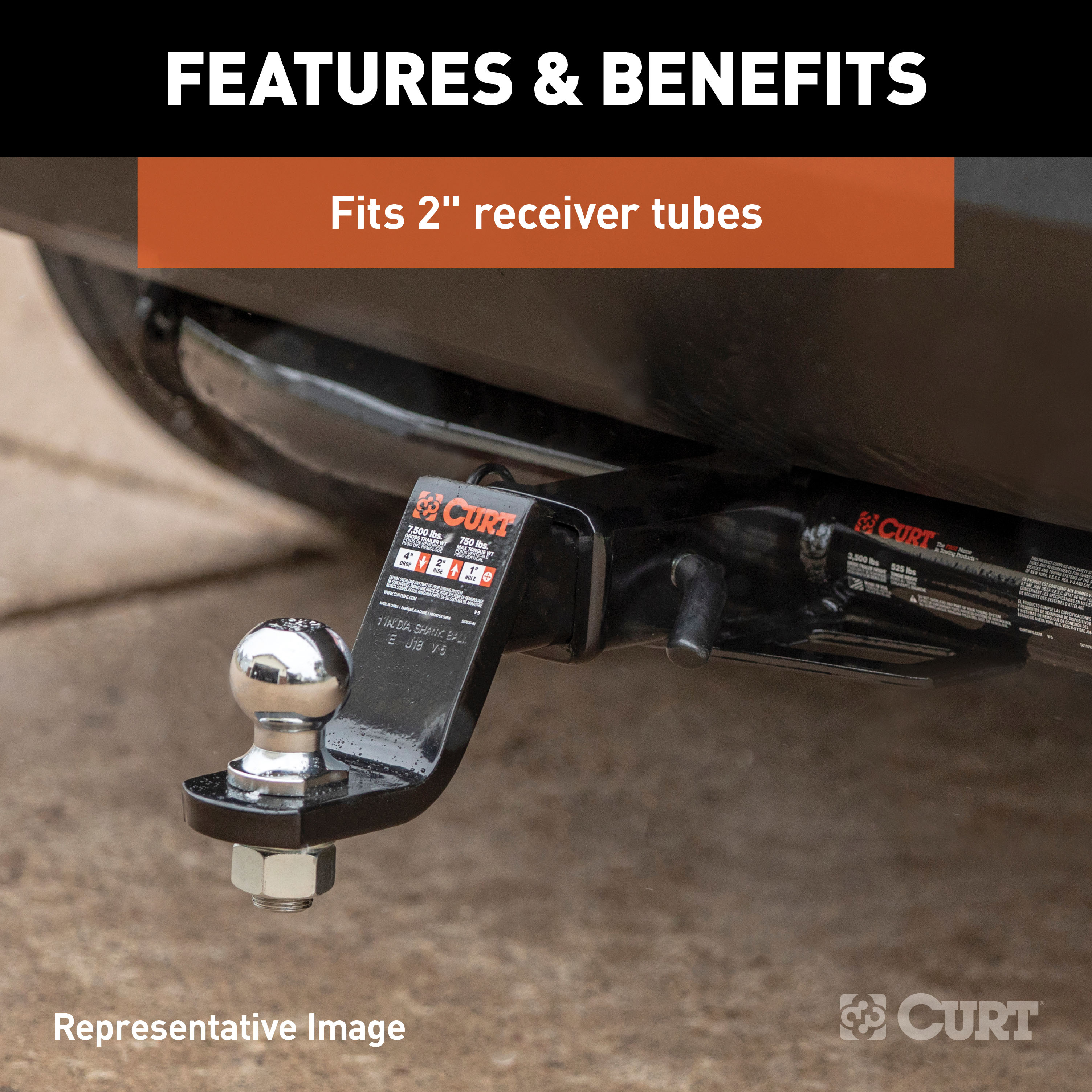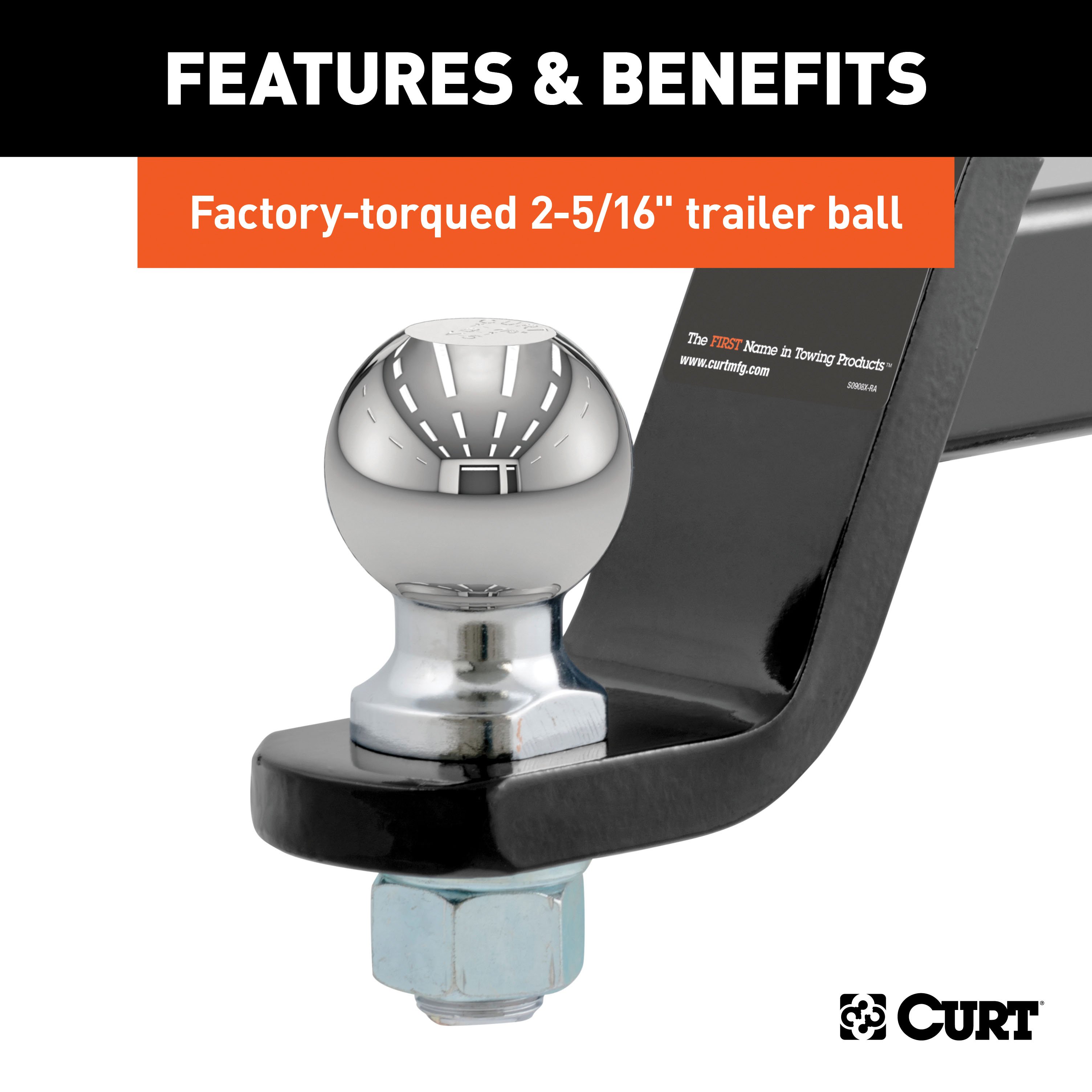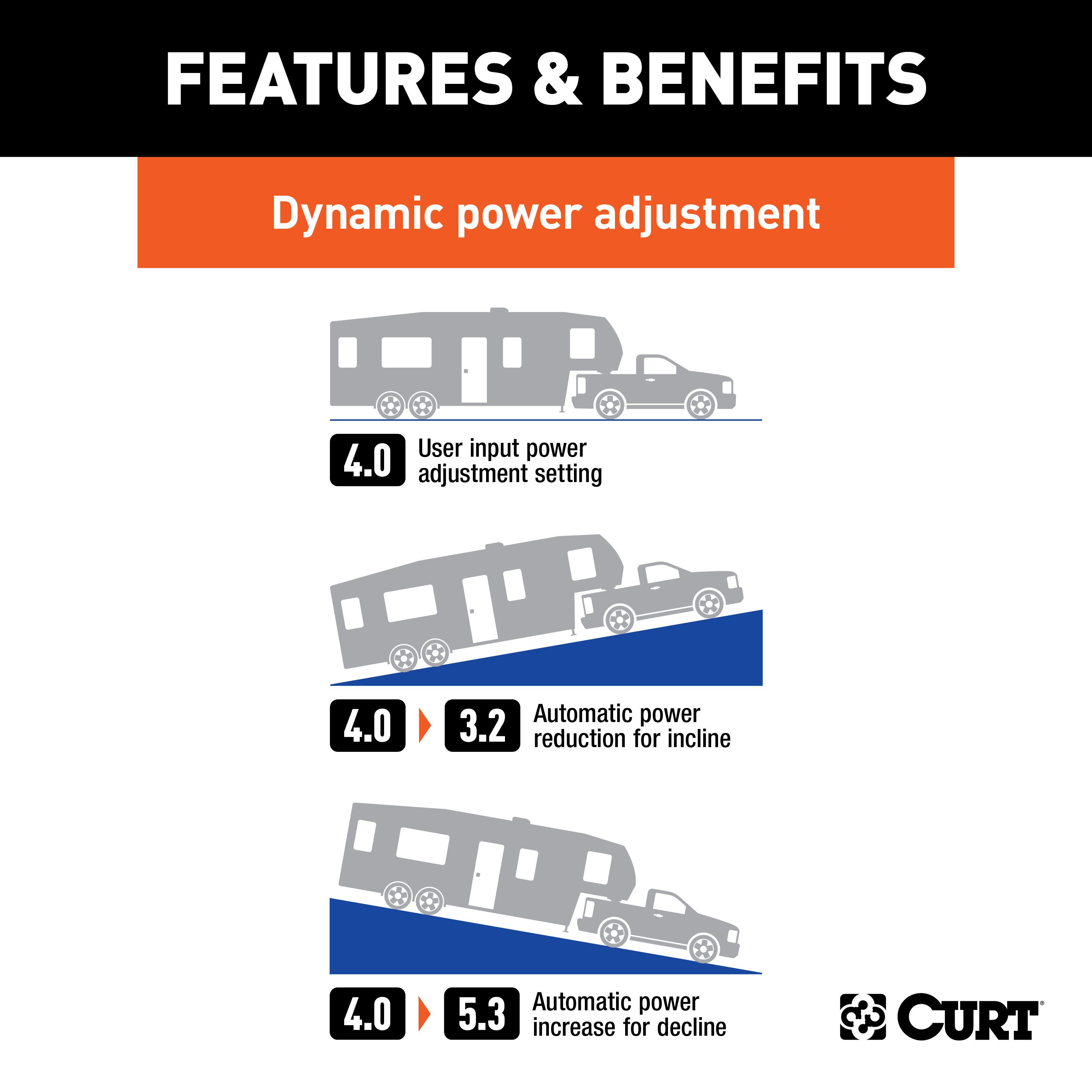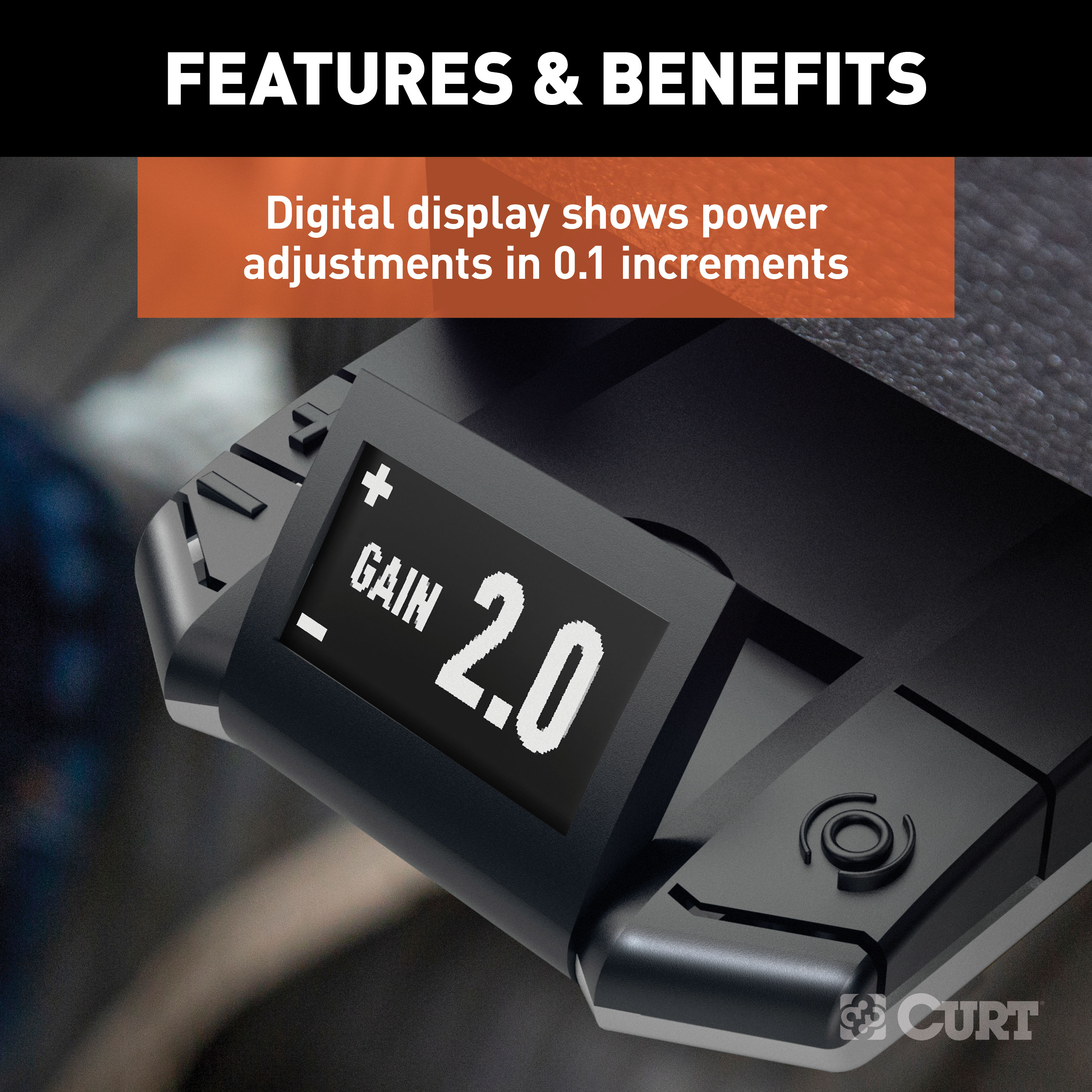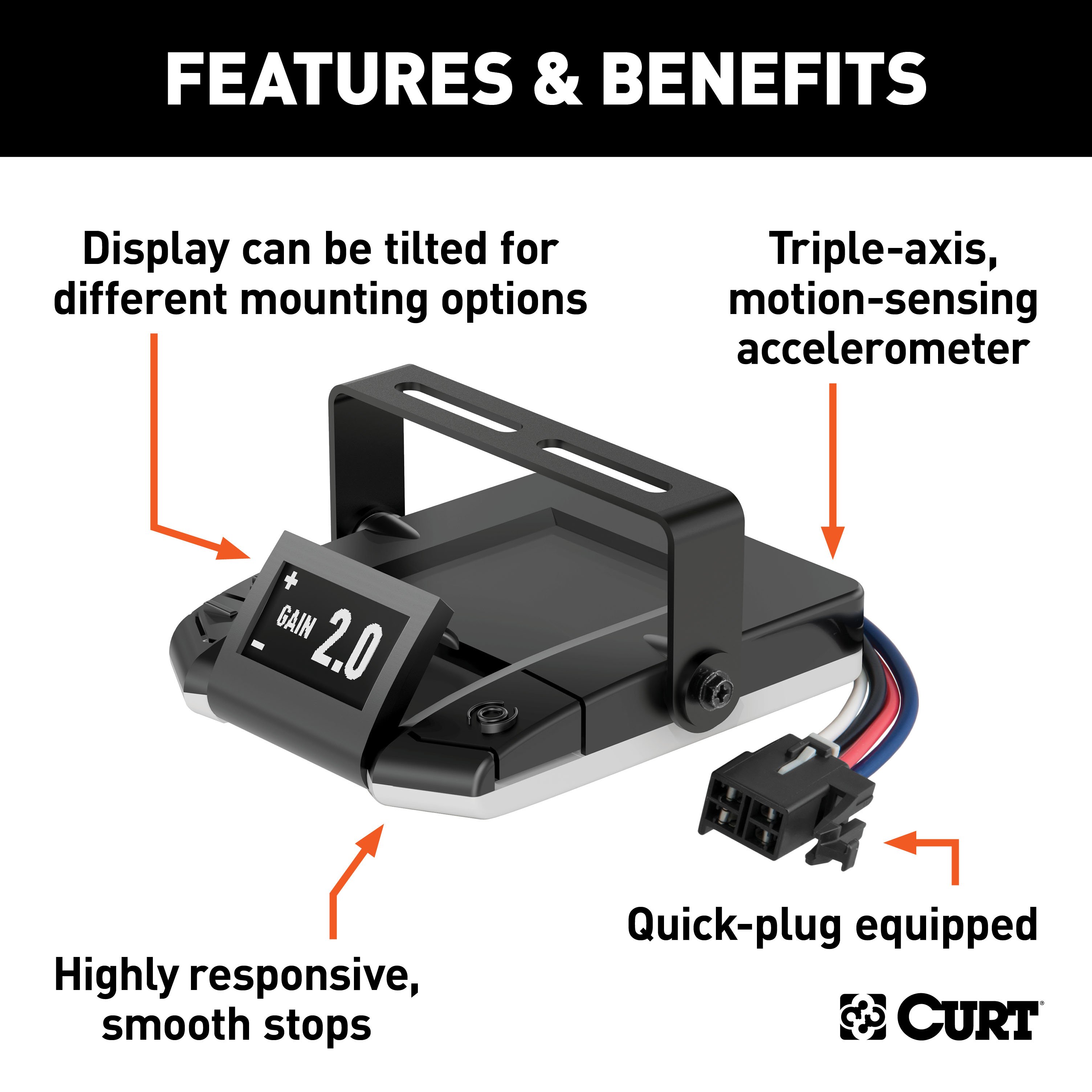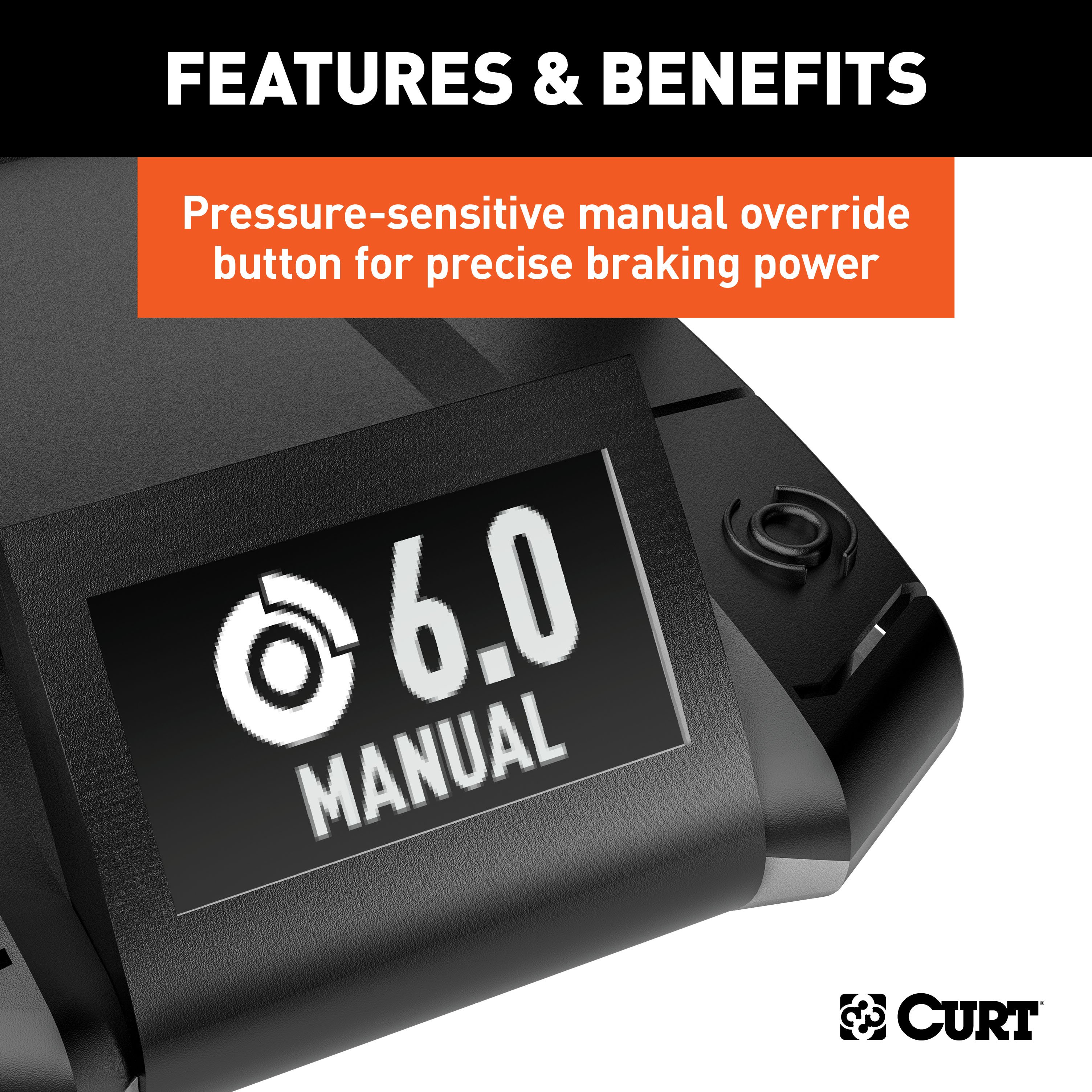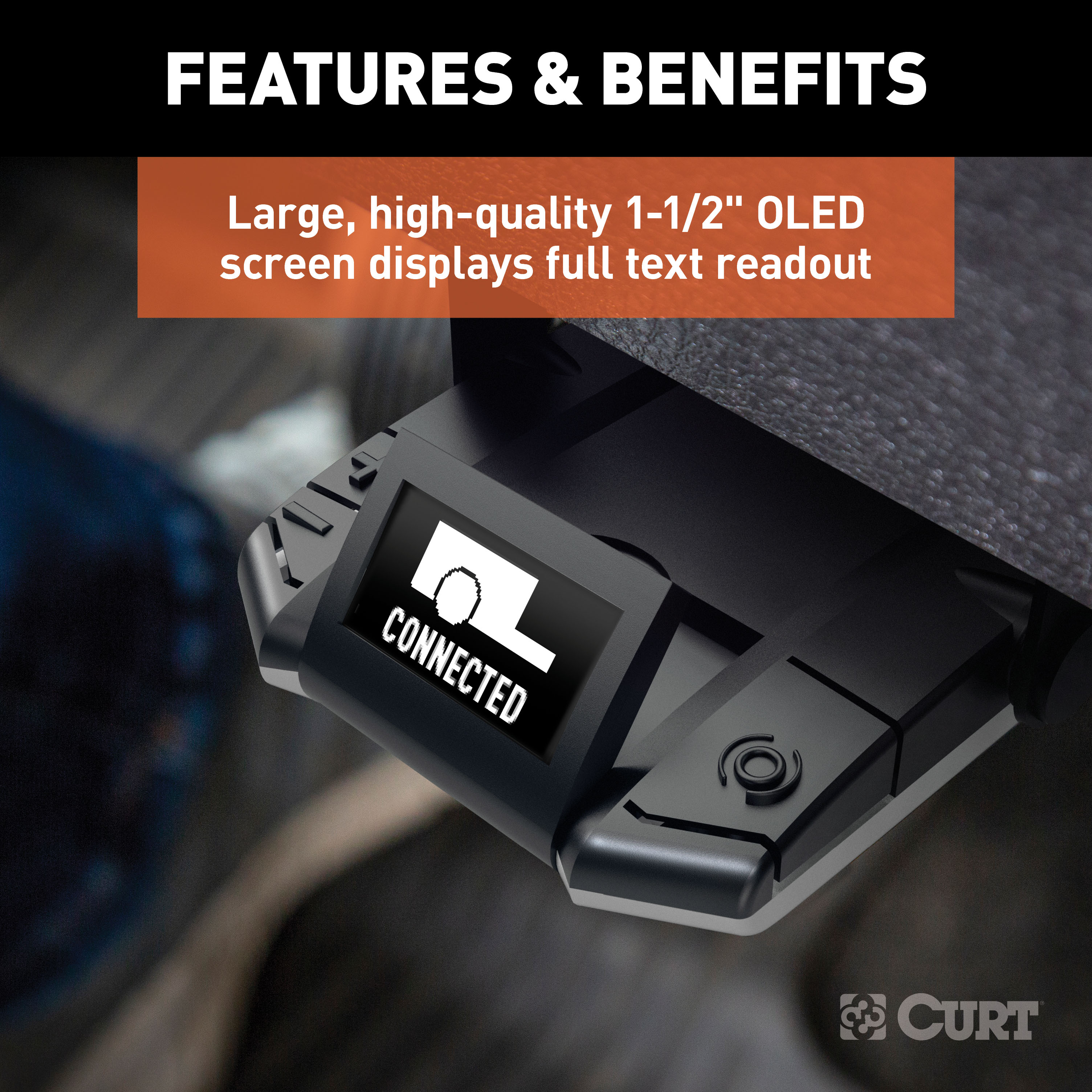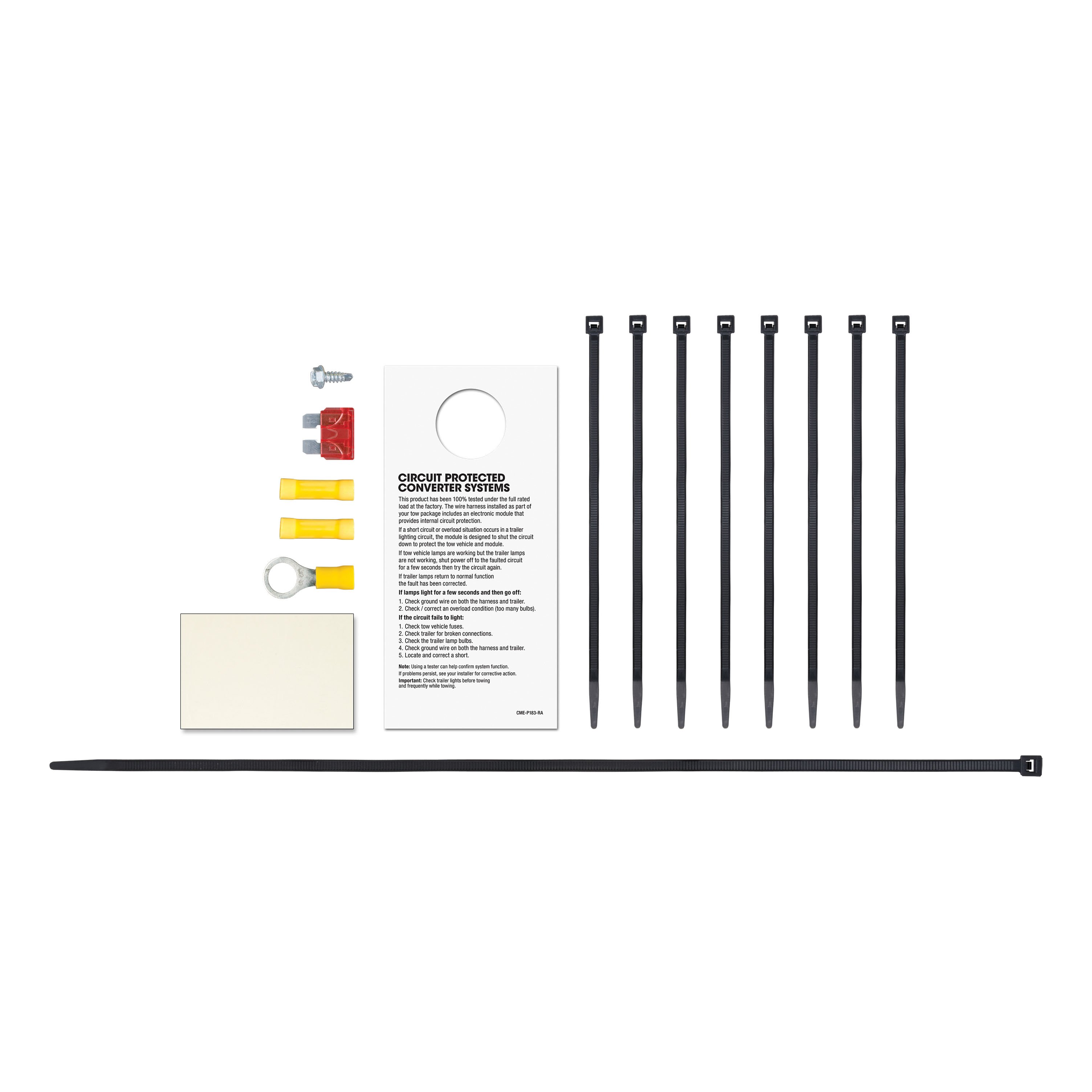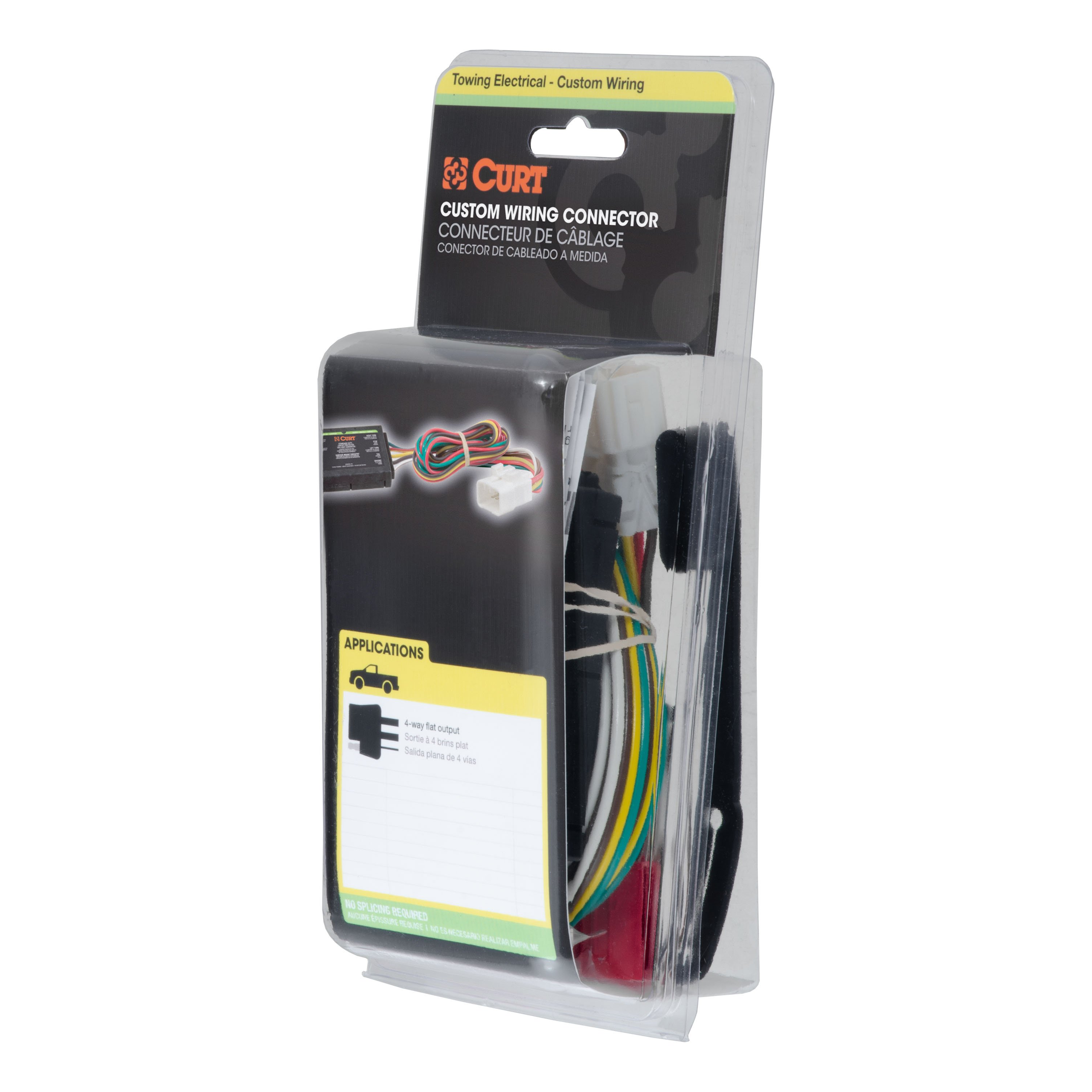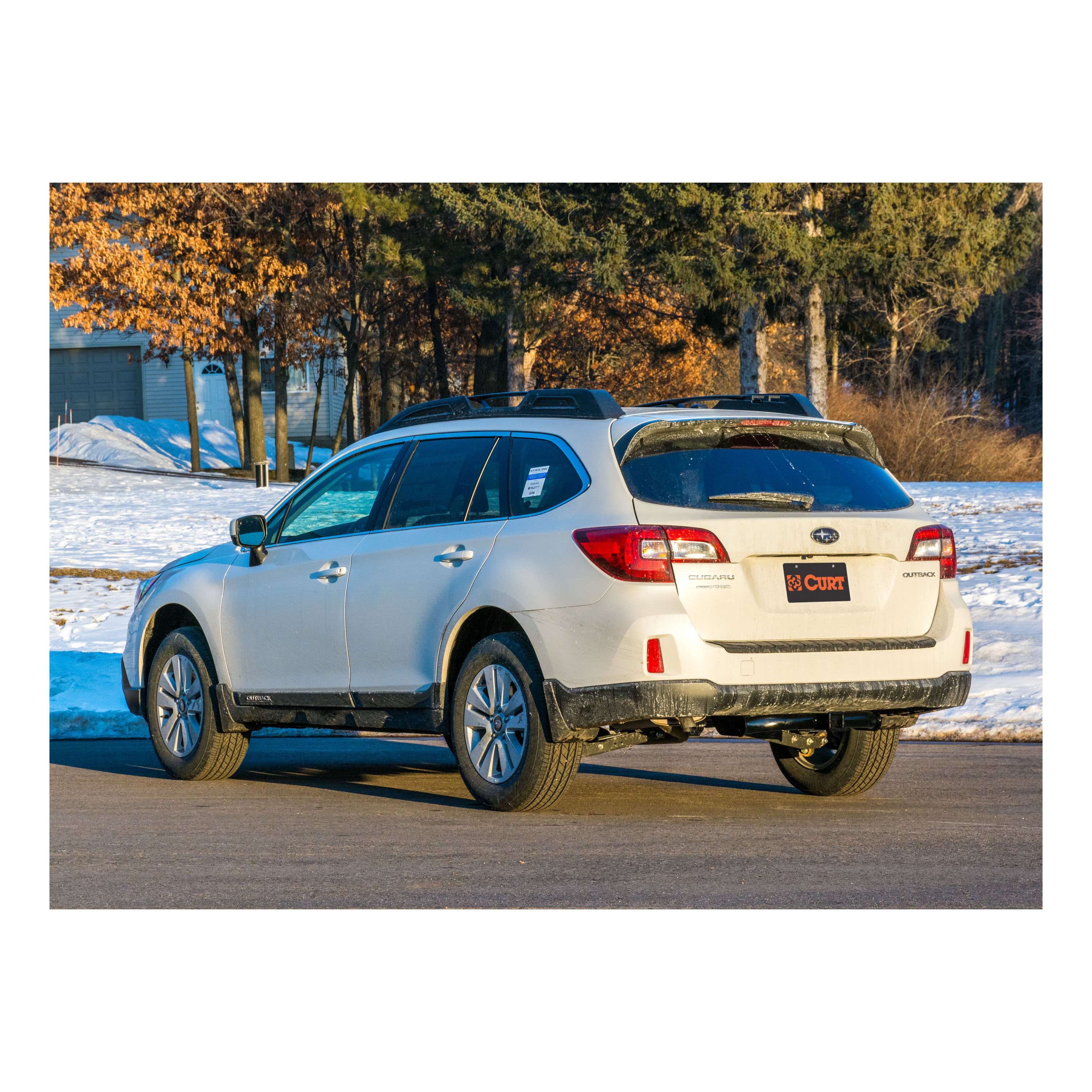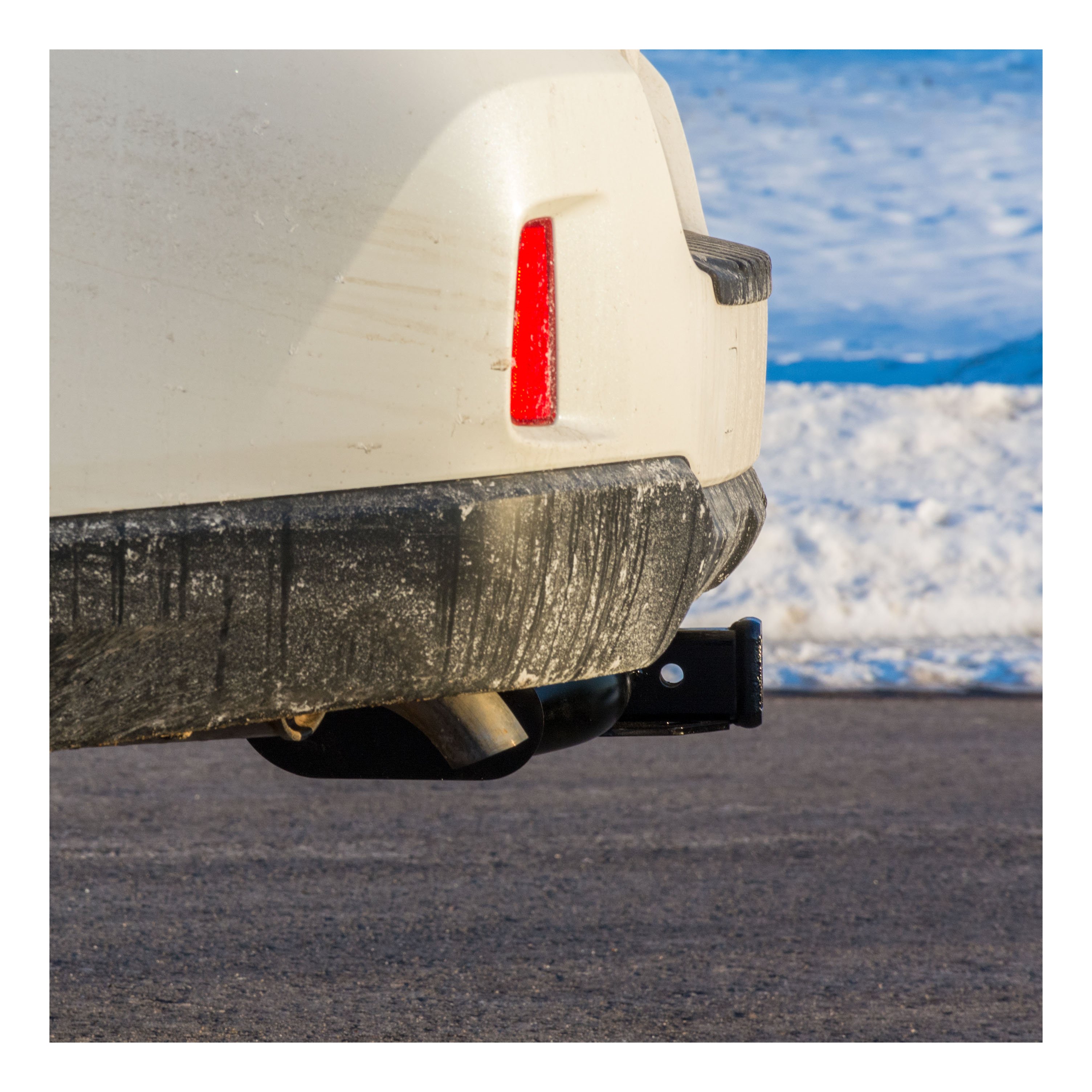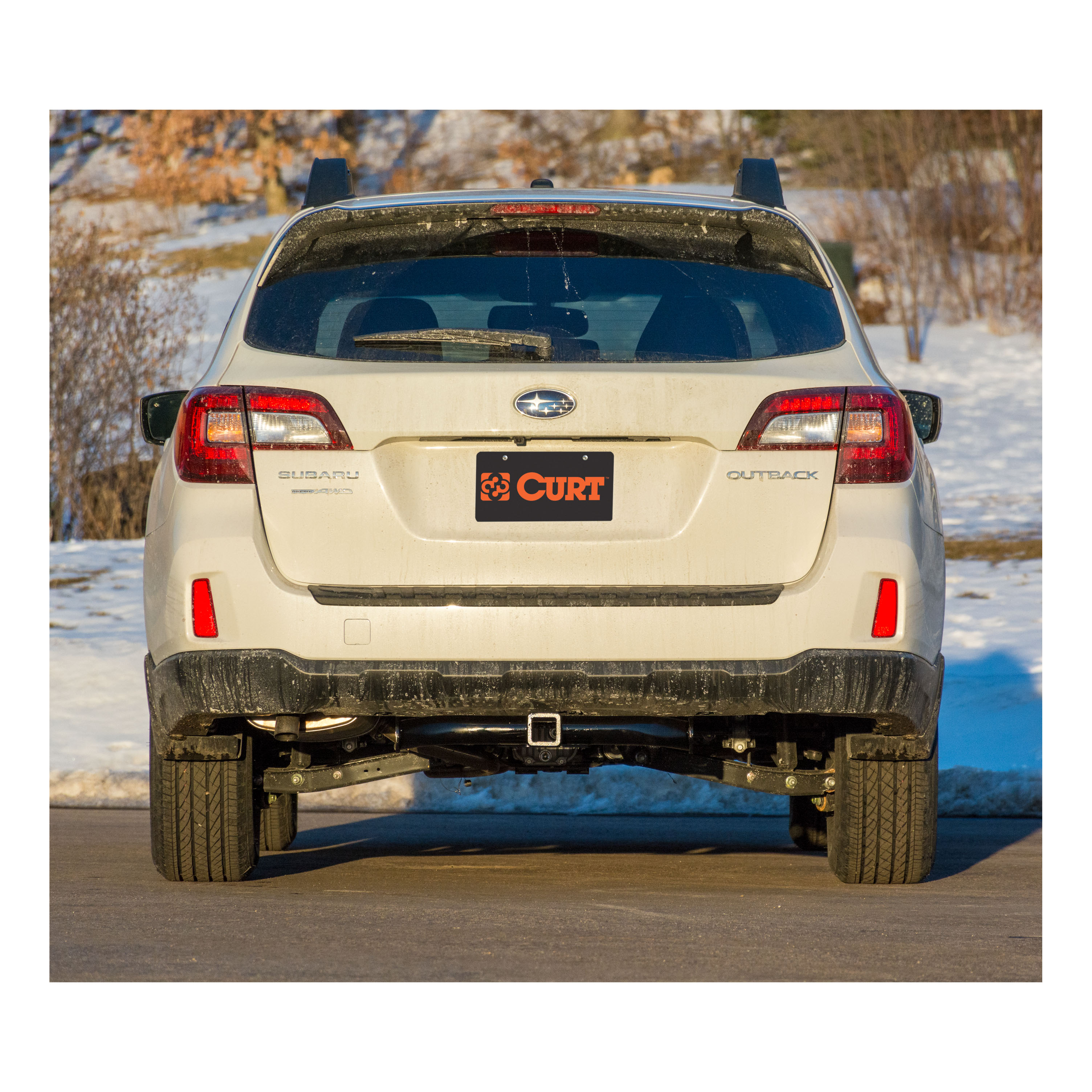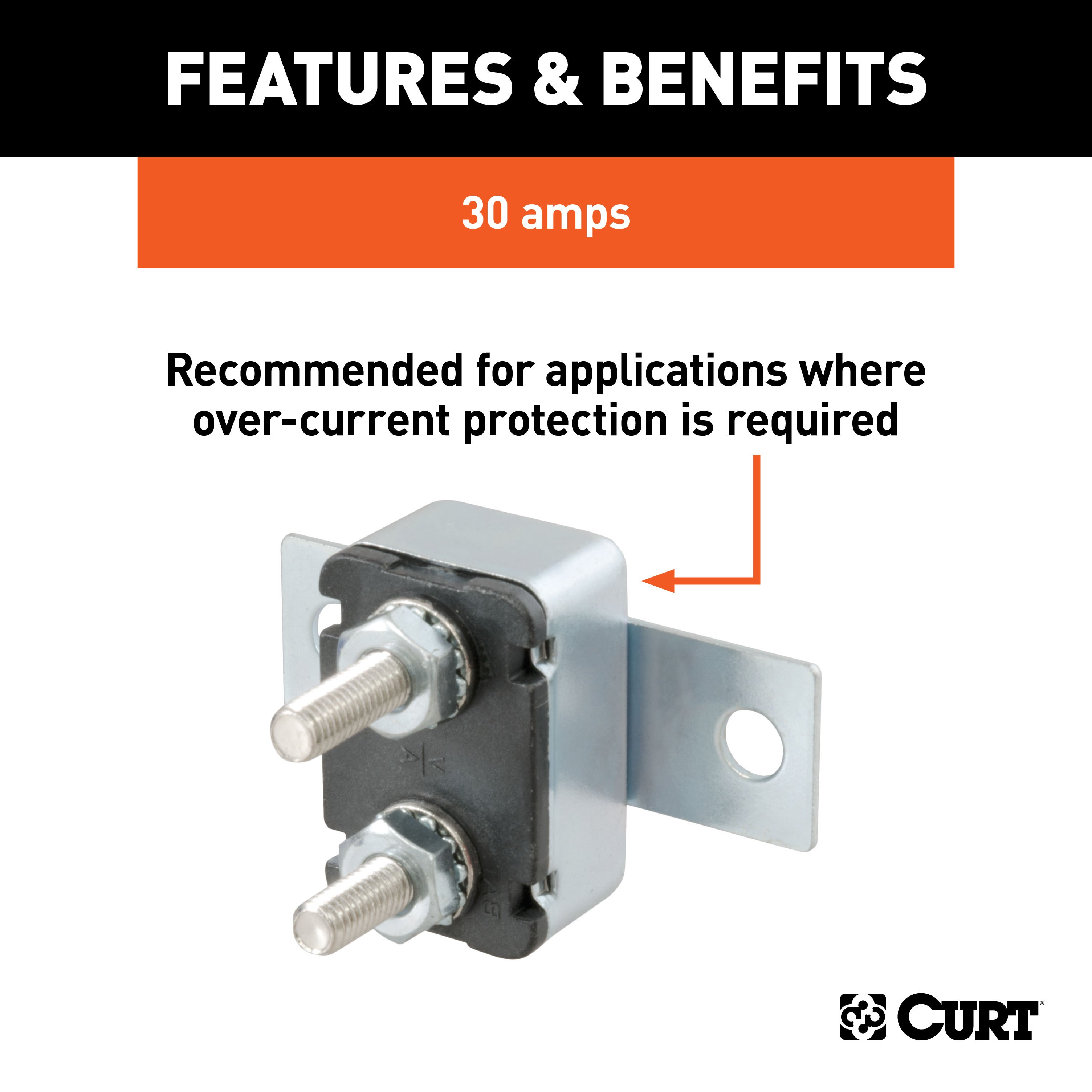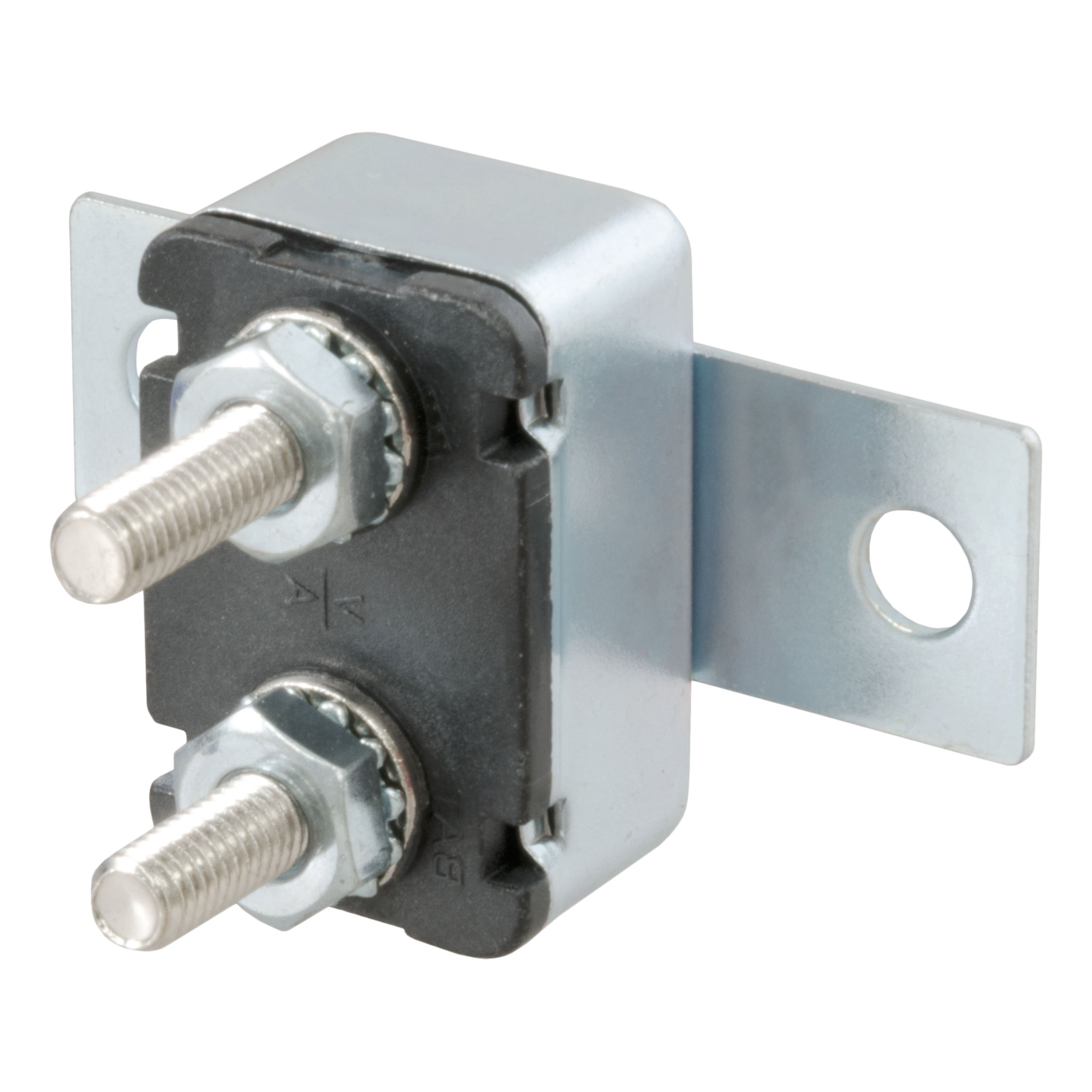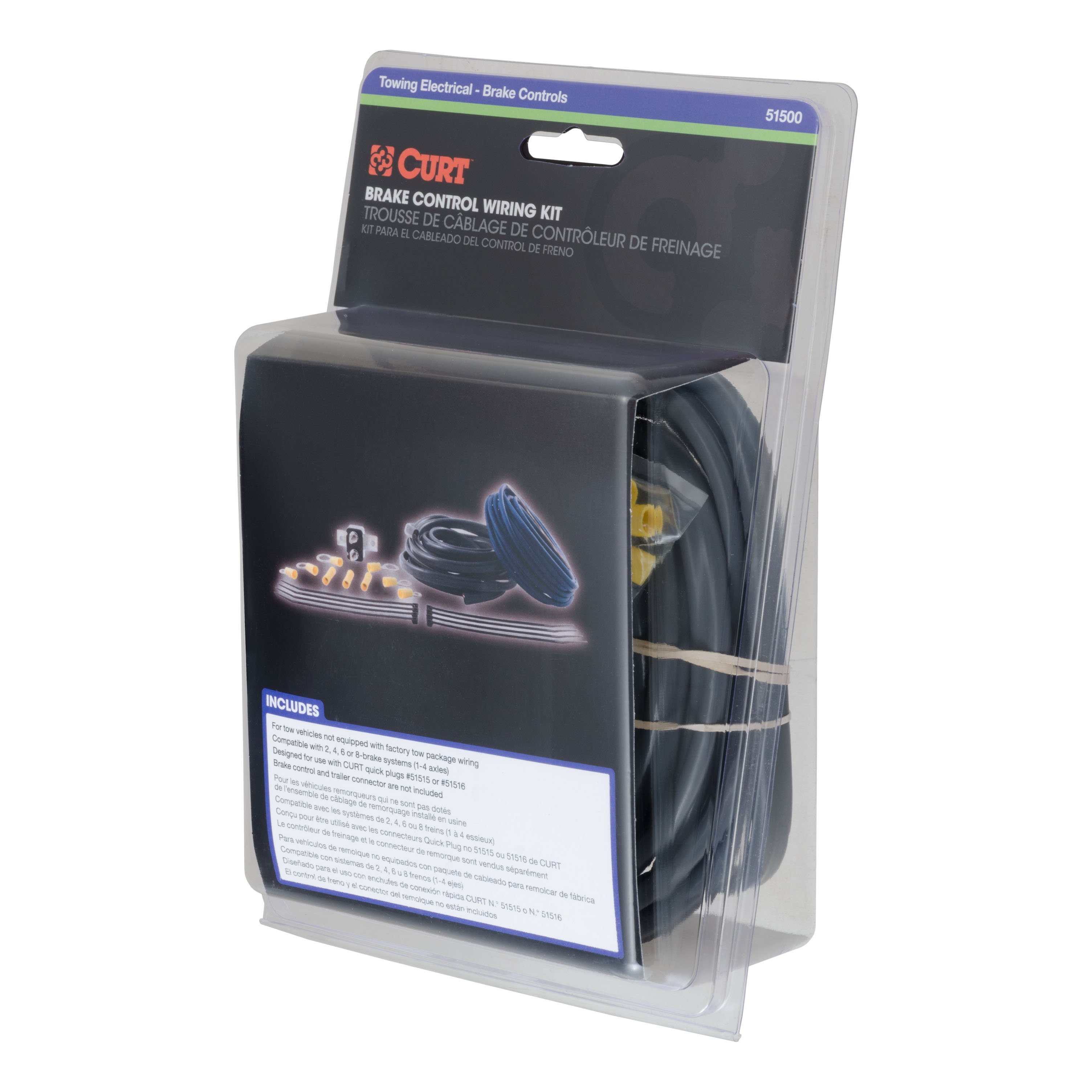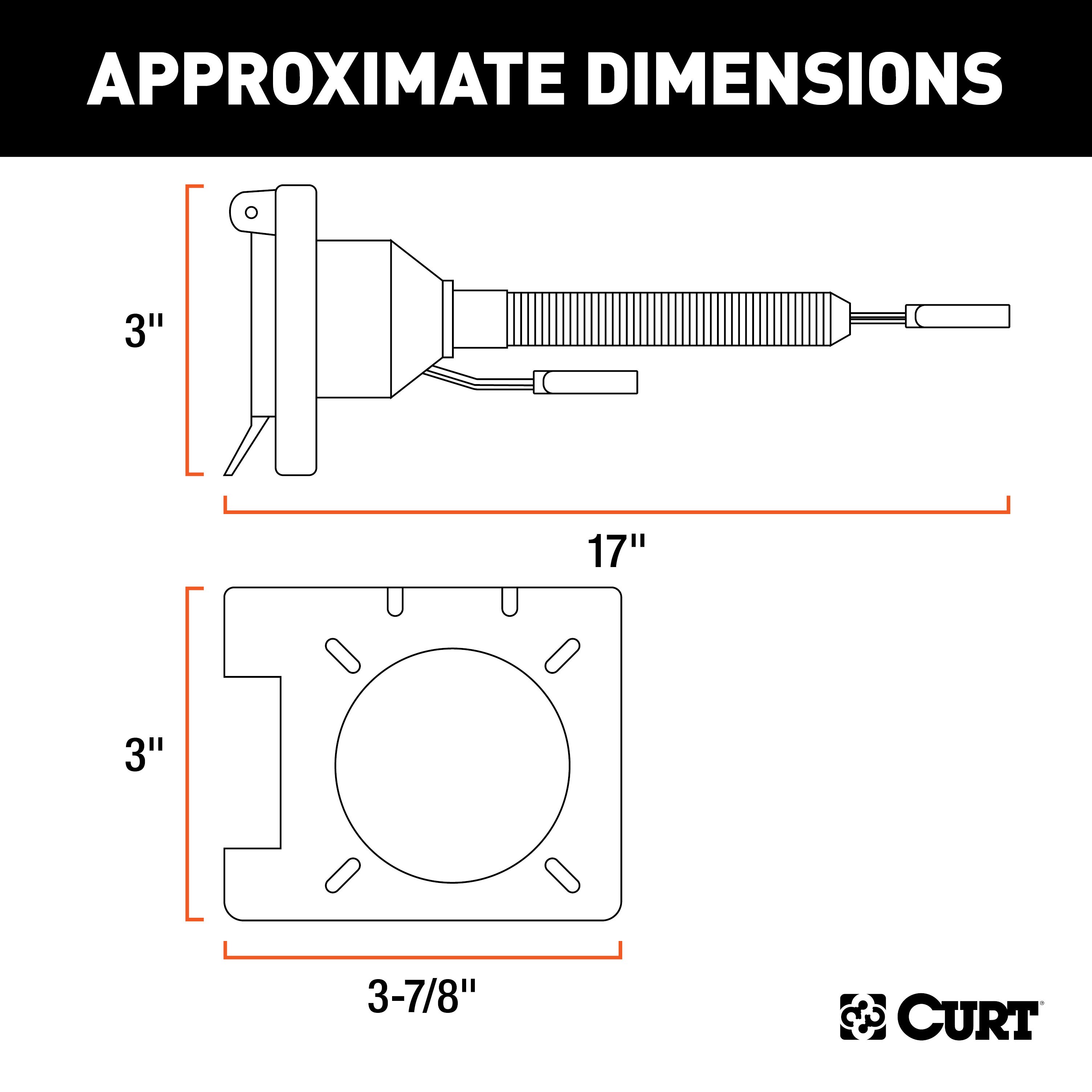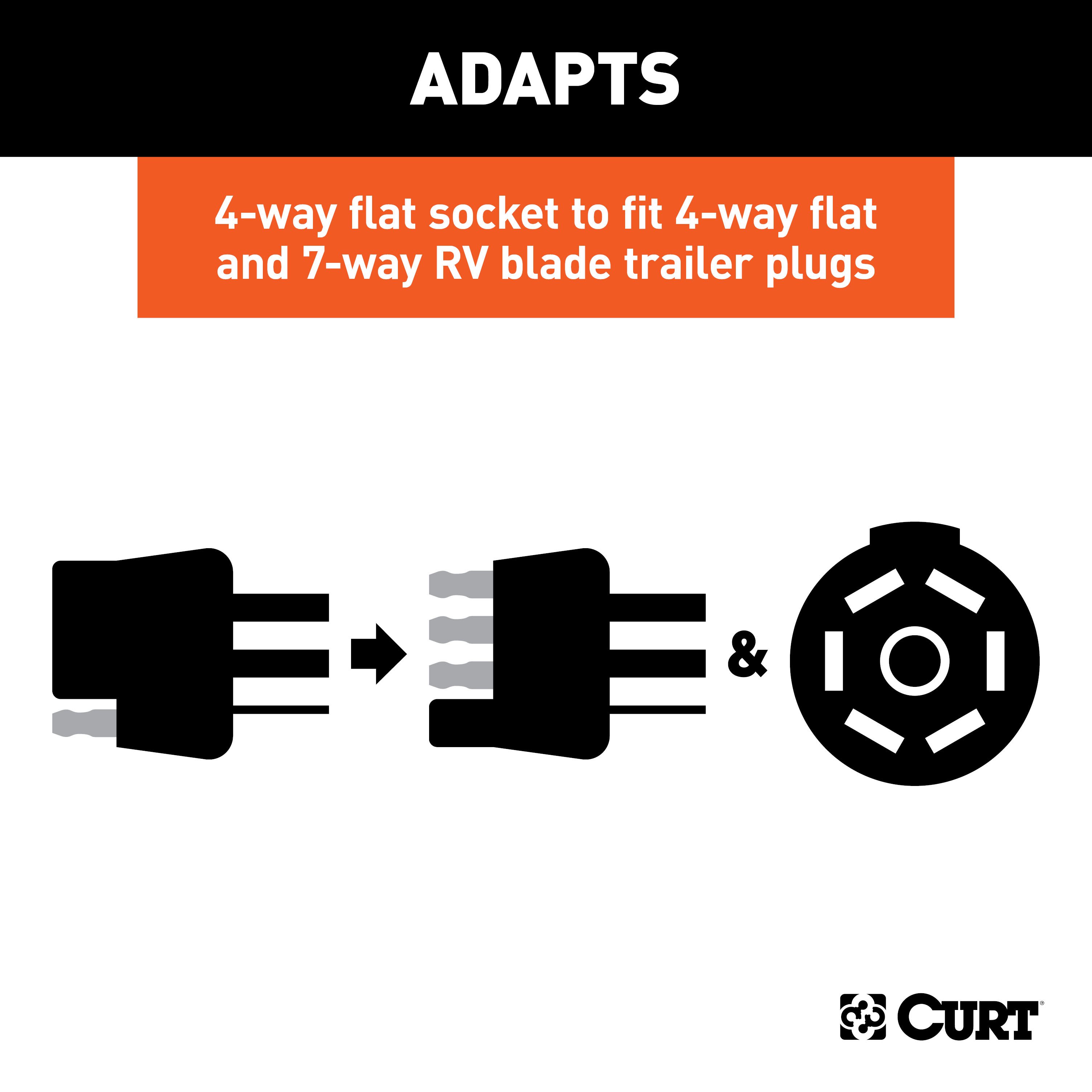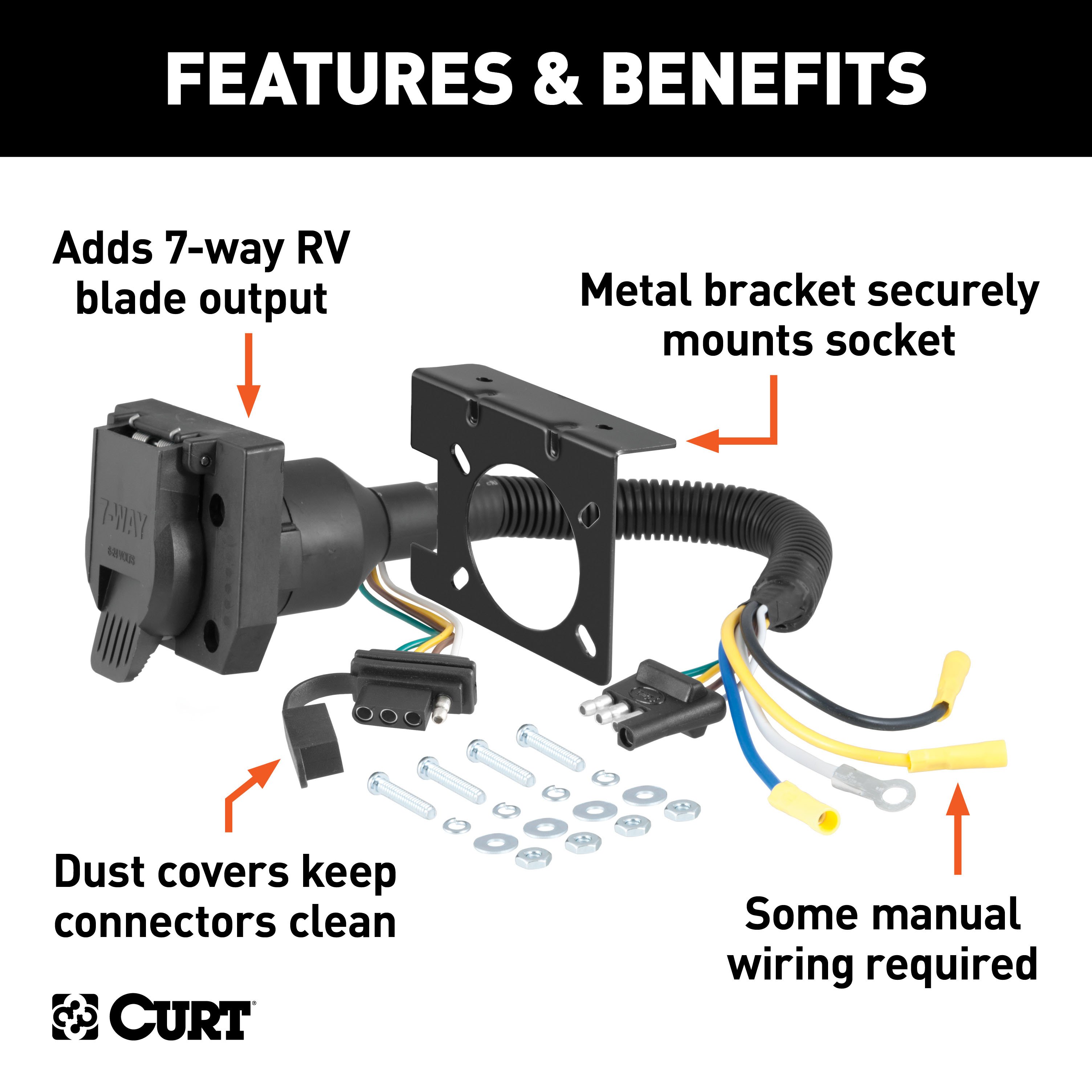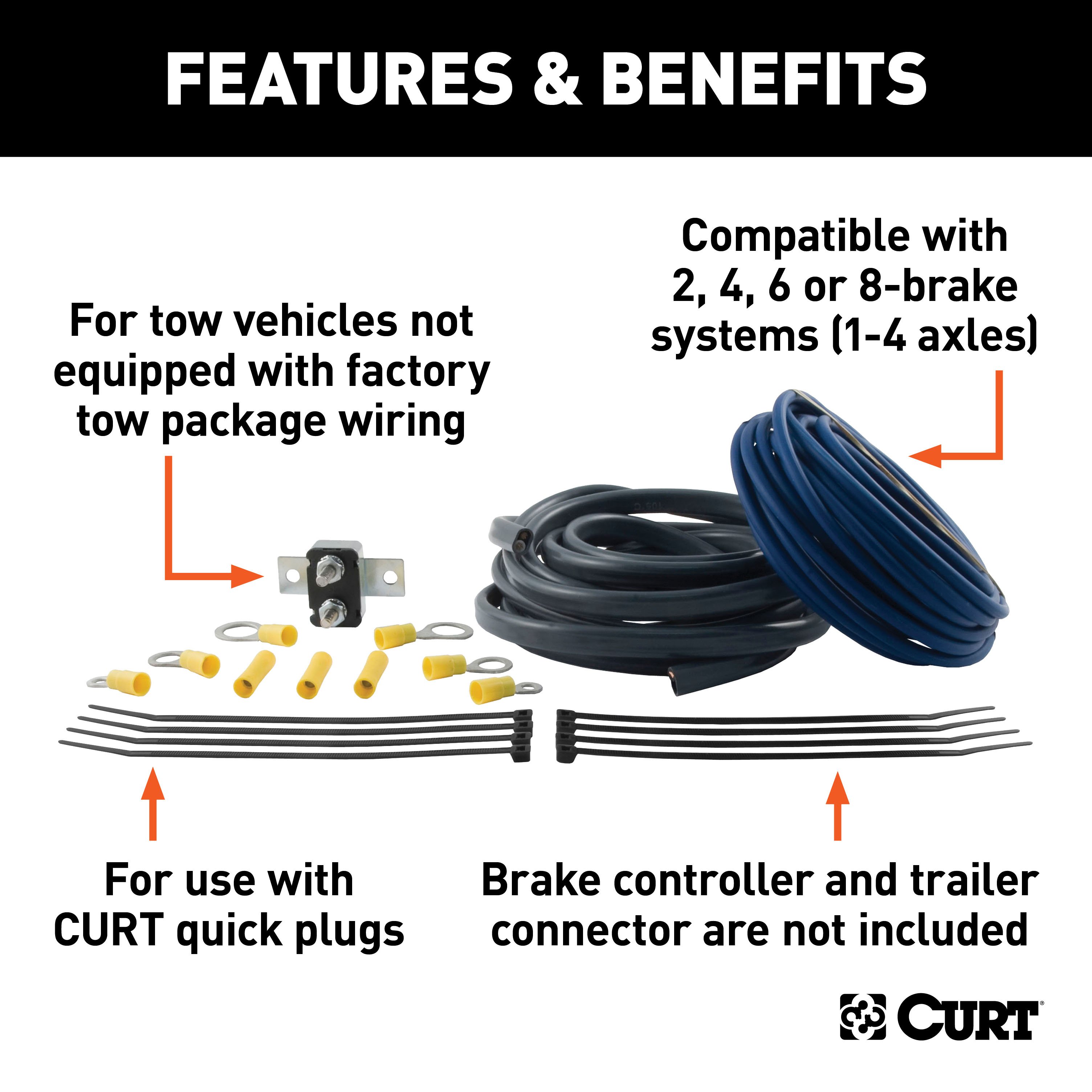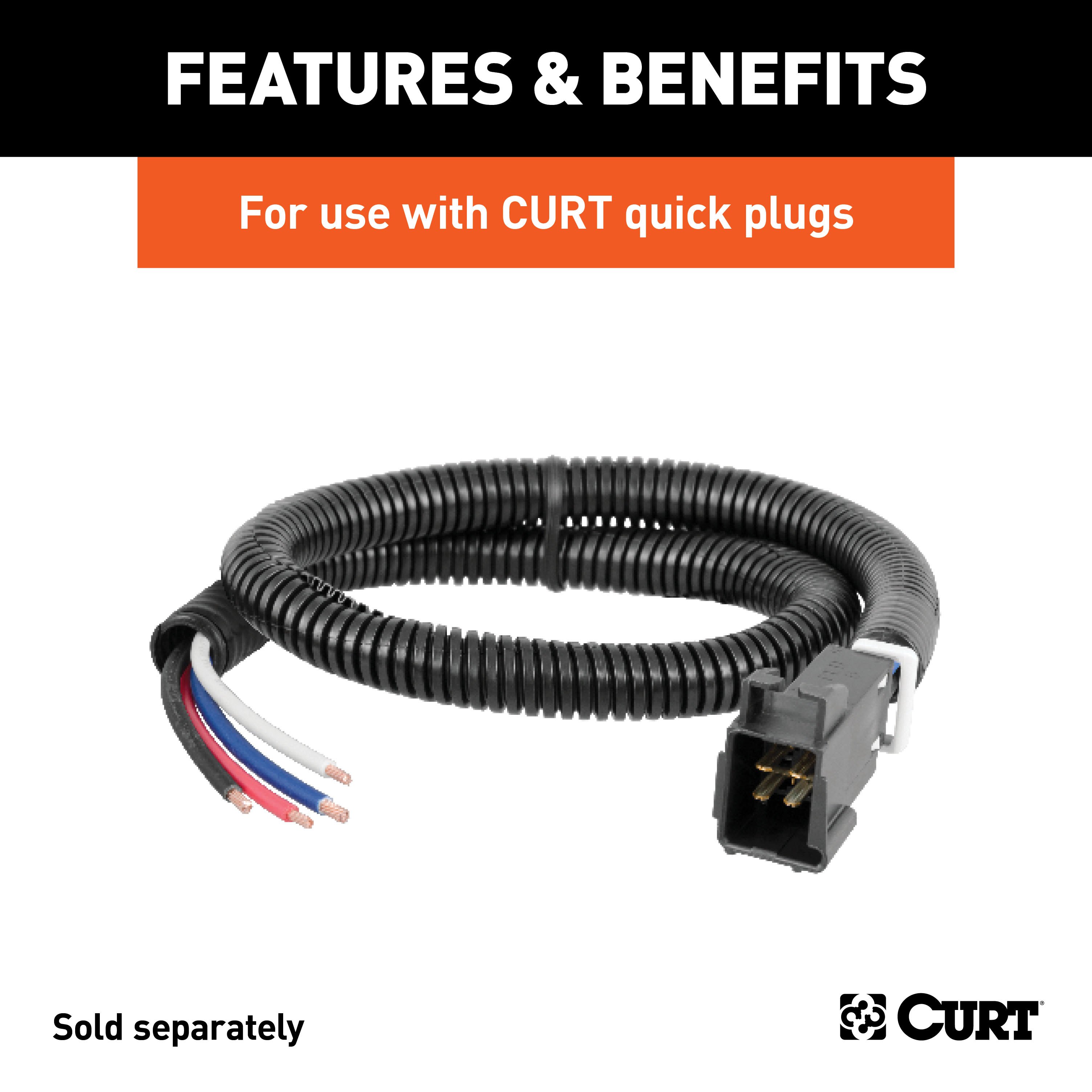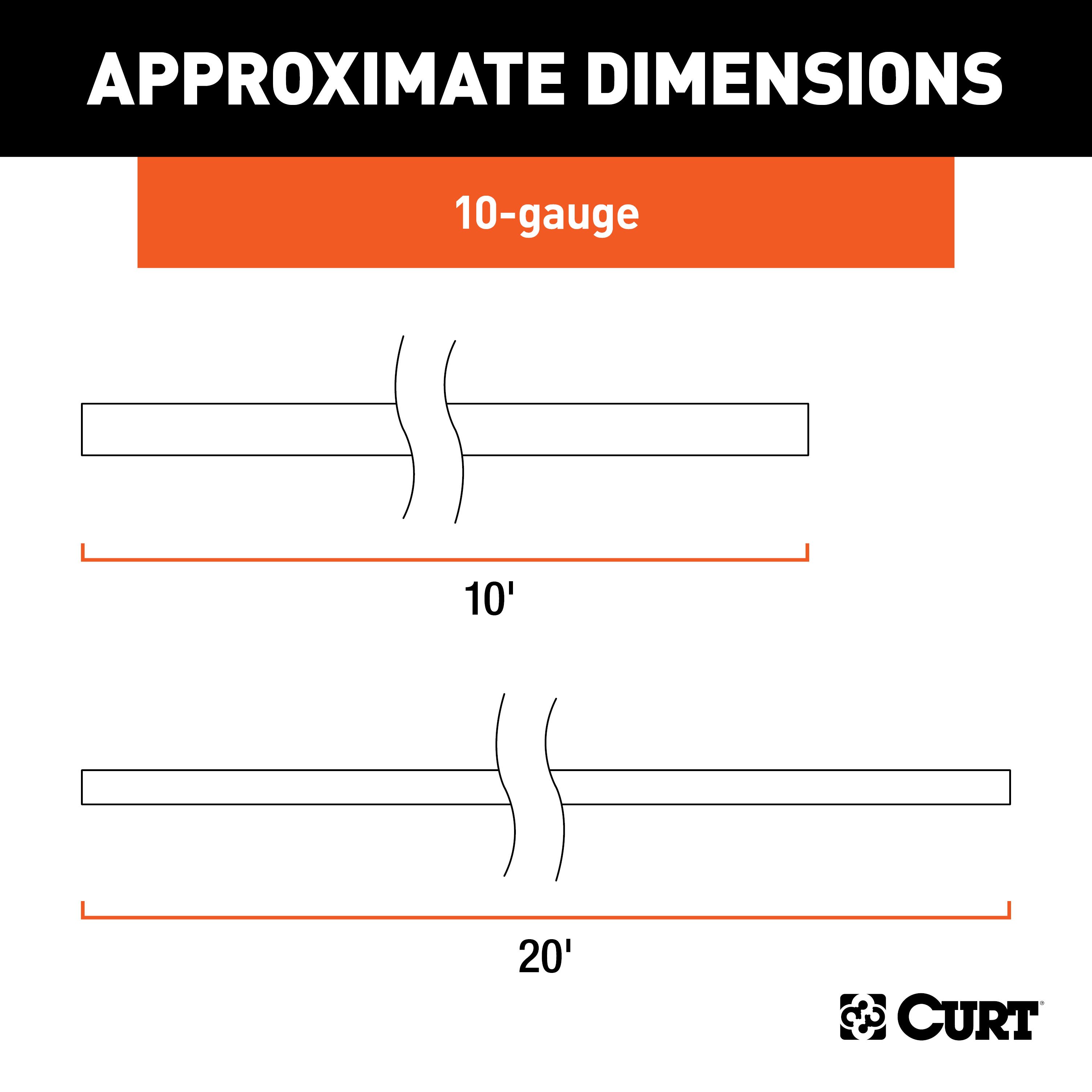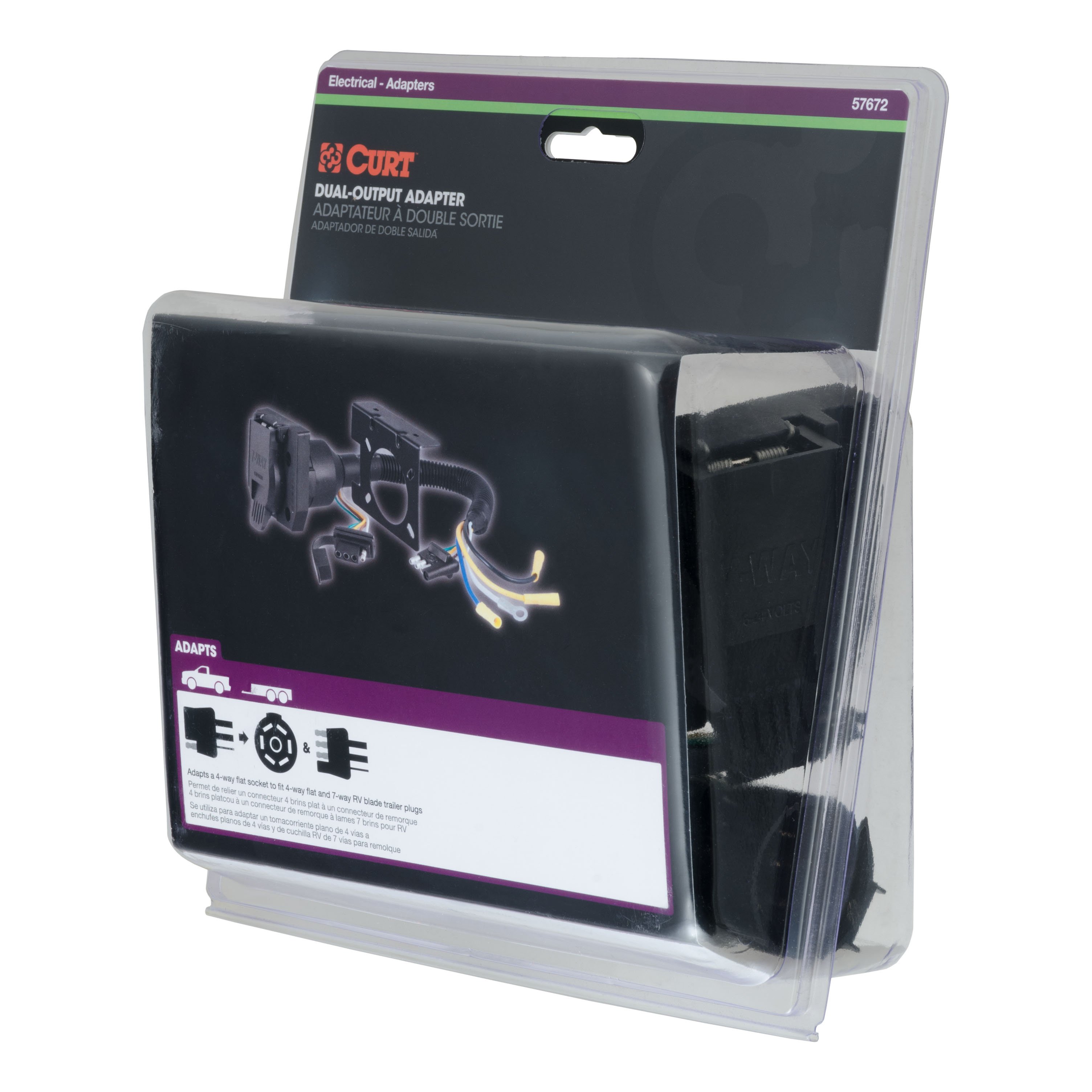Product Details
- Brand: Curt
- Model: 13390 51515 56040 57672 51500 58361 45042 51160-CH3487
- Includes: Class 3 Trailer Tow Hitch, Custom Wiring Connector, Universal Trailer Brake Controller Harness with Pigtails, Dual-Output Electrical Adapter, Trailer Brake Controller Wiring Kit, 30-Amp Universal Circuit Breaker, Loaded Ball Mount with 2-5/16" Ball 2" Shank, Assure Proportional Trailer Brake Controller with Dynamic Screen
Compatibility Chart
Description
Get Expert Help
For 2010-2013 Subaru Outback Wagon Tow Package Camp n' Field Trailer Hitch + Brake Controller Curt Assure 51160 Proportional Up To 4 Axles + 7 Way Trailer Wiring Plug & 2-5/16" ball 4 inch drop Fits All Models Curt 13390 2 inch Tow Receiver Install Notes
Installation Instructions for Subaru Outback Wagon
Part Numbers:
- 13390
Tools Required:
- 10mm Socket
- 19mm Socket
- 8" Socket Extension
- Ratchet
- Torque Wrench
- Drill and 17/32" Drill Bit
- Rotary Tool / Carbide Bit
- Tin Snips / File
Step-by-Step Instructions:
-
Lower the Exhaust:
- Remove the (3) rear rubber exhaust isolators from the frame-mounted hangers.
- Note: Support the exhaust during installation to prevent damage.
- Refer to the Rubber Isolator Removal Diagram.
-
Remove and Trim the Heat Shield:
- Remove the muffler heat shield.
- Trim the heat shield to clear the mounting plate.
- Follow the Heat Shield Trim Diagram:
- Trim 1.125 inches along the bend line.
-
Remove Frame Rail Plugs and Enlarge Holes:
- Remove the (2) rubber plugs from each frame rail.
- Enlarge the forwardmost hole on each frame rail using a rotary tool with a carbide bit to allow the carriage bolt and spacer to fit.
- Refer to the Hole Enlargement Diagram.
-
Fishwire Rear Carriage Bolts and Spacers:
- Fishwire the 1/2"-13 carriage bolts and CM-SP6 square hole spacers into the rearmost holes of each frame rail.
- Leave the fishwires attached to prevent hardware loss.
- Refer to the Fishwire Hardware Technique.
-
Raise the Hitch into Position:
- Carefully raise the hitch into place, ensuring the fishwired hardware remains in position.
- Center the hitch on the vehicle.
- Loosely secure the hitch with the supplied 1/2"-13 hex flange nuts.
-
Mark and Drill Forward Holes:
- Use the hitch as a template to mark and drill the forwardmost holes in each frame rail with a 17/32" drill bit.
-
Fishwire Forward Carriage Bolts and Spacers:
- Fishwire the 1/2"-13 carriage bolts and CM-SP6 spacers into the newly drilled holes.
- Secure the hitch with 1/2"-13 hex flange nuts.
-
Torque Fasteners:
- Torque all 1/2" hardware to 110 ft-lbs using a torque wrench.
-
Reinstall the Heat Shield and Exhaust:
- Reinstall the trimmed heat shield.
- Raise the exhaust back into position and reinstall the rubber isolators.
Hardware List:
- (4) 1/2"-13 x 1-1/2" Carriage Bolts
- (4) CM-SP6 Square Hole Spacers (0.250 x 1.00 x 3.00")
- (4) 1/2"-13 Hex Flange Nuts
- (1) 1/2" Fishwire Tool
Safety Notes:
- Periodically check this receiver hitch to ensure all fasteners are tight and structural components are sound.
- Warning: All non-trailer loads must be supported by auxiliary stabilizing straps.
- Failure to properly support non-trailer loads will void the product warranty.
- Do not exceed the vehicle manufacturer’s recommended towing capacity.
Specifications:
- Gross Load Capacity (Weight Carrying Hitch):
- 4,000 lbs. Trailer Weight
- 600 lbs. Tongue Weight
- Professional Install Time: 45 minutes
- Novice (DIY) Install Time: 90 minutes
Manufacturer Notes:
- Hole enlargement, heat shield trimming, and fishwiring are required for installation.
- For installation questions, call Technical Support at 1-877-287-8634.
End of Instructions
Installation Instructions for Subaru Outback Wagon
Part Numbers:
- 13390
Tools Required:
- 10mm Socket
- 19mm Socket
- 8" Socket Extension
- Ratchet
- Torque Wrench
- Drill and 17/32" Drill Bit
- Rotary Tool / Carbide Bit
- Tin Snips / File
Step-by-Step Instructions:
-
Lower the Exhaust:
- Remove the (3) rear rubber exhaust isolators from the frame-mounted hangers.
- Note: Support the exhaust during installation to prevent damage.
- Refer to the Rubber Isolator Removal Diagram.
-
Remove and Trim the Heat Shield:
- Remove the muffler heat shield.
- Trim the heat shield to clear the mounting plate.
- Follow the Heat Shield Trim Diagram:
- Trim 1.125 inches along the bend line.
-
Remove Frame Rail Plugs and Enlarge Holes:
- Remove the (2) rubber plugs from each frame rail.
- Enlarge the forwardmost hole on each frame rail using a rotary tool with a carbide bit to allow the carriage bolt and spacer to fit.
- Refer to the Hole Enlargement Diagram.
-
Fishwire Rear Carriage Bolts and Spacers:
- Fishwire the 1/2"-13 carriage bolts and CM-SP6 square hole spacers into the rearmost holes of each frame rail.
- Leave the fishwires attached to prevent hardware loss.
- Refer to the Fishwire Hardware Technique.
-
Raise the Hitch into Position:
- Carefully raise the hitch into place, ensuring the fishwired hardware remains in position.
- Center the hitch on the vehicle.
- Loosely secure the hitch with the supplied 1/2"-13 hex flange nuts.
-
Mark and Drill Forward Holes:
- Use the hitch as a template to mark and drill the forwardmost holes in each frame rail with a 17/32" drill bit.
-
Fishwire Forward Carriage Bolts and Spacers:
- Fishwire the 1/2"-13 carriage bolts and CM-SP6 spacers into the newly drilled holes.
- Secure the hitch with 1/2"-13 hex flange nuts.
-
Torque Fasteners:
- Torque all 1/2" hardware to 110 ft-lbs using a torque wrench.
-
Reinstall the Heat Shield and Exhaust:
- Reinstall the trimmed heat shield.
- Raise the exhaust back into position and reinstall the rubber isolators.
Hardware List:
- (4) 1/2"-13 x 1-1/2" Carriage Bolts
- (4) CM-SP6 Square Hole Spacers (0.250 x 1.00 x 3.00")
- (4) 1/2"-13 Hex Flange Nuts
- (1) 1/2" Fishwire Tool
Safety Notes:
- Periodically check this receiver hitch to ensure all fasteners are tight and structural components are sound.
- Warning: All non-trailer loads must be supported by auxiliary stabilizing straps.
- Failure to properly support non-trailer loads will void the product warranty.
- Do not exceed the vehicle manufacturer’s recommended towing capacity.
Specifications:
- Gross Load Capacity (Weight Carrying Hitch):
- 4,000 lbs. Trailer Weight
- 600 lbs. Tongue Weight
- Professional Install Time: 45 minutes
- Novice (DIY) Install Time: 90 minutes
Attention: This is a summary of the installation procedure. For complete installation instructions, including diagrams and detailed information from the manufacturer, please download the full installation PDF.
Need Assistance? For technical support and assistance, our team of experts is available to help. You can reach our tech support by visiting www.trailerjacks.com or calling 877-869-6690.
Warranty Information:
The product is covered under warranty for the duration specified. For complete warranty instructions, please download the full installation PDF.
End of Instructions
Installation Instructions for Subaru Ascent, Subaru Forester, Subaru Outback, Subaru Crosstrek (excluding Hybrid), and Subaru XV Crosstrek (excluding Hybrid)
Part Numbers:
- 56040
Tools Required:
- 10 mm Socket
- Ratchet
- Panel Trim Removal Tool
Step-by-Step Instructions:
-
Disconnect the Battery
Locate the vehicle battery on the driver side under the hood and disconnect the negative battery terminal. -
Prepare the Vehicle Interior
Open the vehicle tailgate. Remove all trunk floor coverings.- Remove the plastic fasteners securing the trays in the center and on the driver side.
- Remove the trays.
-
Locate the Vehicle Wiring Harness Connectors
- 2009-2013 Forester: Under the trays on the driver side.
- Outback: Behind the driver side inner fender trim, visible near the rubber grommet in the floor and the cargo anchor.
- XV Crosstrek / 2014+ Forester: Pull back on the rear trim panel to find the taillight wiring harness connectors on the driver side.
-
Connect the Custom Connector
Insert the custom connector end into the vehicle connector. Ensure the connectors are fully inserted and the locking tabs are engaged. -
Ground the White Wire
Locate a suitable grounding point near the connector (e.g., an existing screw with nut in the vehicle frame). If necessary, drill a 3/32" pilot hole for the provided screw.- The grounding area should be free of rust, dirt, and paint.
- Secure the white ground wire using the ring terminal and provided screw.
Warning: Check for items hidden behind or under surfaces before drilling to avoid damage or personal injury.
-
Mount the Converter Box
Locate a flat spot inside the vehicle near the taillight. Adhere the black converter box using the provided double-sided tape. -
Install the Fuse
Install the red 10-amp fuse into the in-line fuse holder. -
Route the 4-Flat Connector
When in use, route the 4-flat connector to the center of the vehicle. When not in use, roll it up and store it in a convenient, out-of-the-way location.- Secure any loose wires with the provided cable ties.
-
Reinstall Components
Reinstall all items removed during installation.
Reconnect the negative battery terminal.
Attach the provided 4-flat dust cover to help prevent corrosion.
Safety Notes:
- The battery connection must be fuse-protected (10 amps max). Exceeding the product rating can void the warranty, cause overheating, and result in a fire hazard.
- Do not exceed the product rating or the tow vehicle's lamp load rating, whichever is lower.
- Verify all wiring connections and ensure proper function using a test light or a properly wired trailer before towing.
Specifications:
- Signal Circuits: 3.0 amps per side
- Tail / Running Circuits: 6.0 amps total
Installation Instructions for Vehicle Models
Part Numbers:
- 56040
Tools Required:
- 10 mm Socket
- Ratchet
- Panel Trim Removal Tool
Step-by-Step Instructions:
-
Disconnect the Battery
Locate the vehicle battery on the driver side under the hood and disconnect the negative battery terminal. -
Prepare the Vehicle Interior
Open the vehicle tailgate. Remove all trunk floor coverings.- Remove the plastic fasteners securing the trays in the center and on the driver side.
- Remove the trays.
-
Locate the Vehicle Wiring Harness Connectors
- For Certain Models: Under the trays on the driver side.
- For Other Models: Behind the driver side inner fender trim, visible near the rubber grommet in the floor and the cargo anchor.
- For Specific Model Years: Pull back on the rear trim panel to find the taillight wiring harness connectors on the driver side.
-
Connect the Custom Connector
Insert the custom connector end into the vehicle connector. Ensure the connectors are fully inserted and the locking tabs are engaged. -
Ground the White Wire
Locate a suitable grounding point near the connector (e.g., an existing screw with nut in the vehicle frame). If necessary, drill a 3/32" pilot hole for the provided screw.- The grounding area should be free of rust, dirt, and paint.
- Secure the white ground wire using the ring terminal and provided screw.
Warning: Check for items hidden behind or under surfaces before drilling to avoid damage or personal injury.
-
Mount the Converter Box
Locate a flat spot inside the vehicle near the taillight. Adhere the black converter box using the provided double-sided tape. -
Install the Fuse
Install the red 10-amp fuse into the in-line fuse holder. -
Route the 4-Flat Connector
When in use, route the 4-flat connector to the center of the vehicle. When not in use, roll it up and store it in a convenient, out-of-the-way location.- Secure any loose wires with the provided cable ties.
-
Reinstall Components
Reinstall all items removed during installation.
Reconnect the negative battery terminal.
Attach the provided 4-flat dust cover to help prevent corrosion.
Safety Notes:
- The battery connection must be fuse-protected (10 amps max). Exceeding the product rating can void the warranty, cause overheating, and result in a fire hazard.
- Do not exceed the product rating or the tow vehicle's lamp load rating, whichever is lower.
- Verify all wiring connections and ensure proper function using a test light or a properly wired trailer before towing.
Specifications:
- Signal Circuits: 3.0 amps per side
- Tail / Running Circuits: 6.0 amps total
Additional Information:
- Attention: This is a summary of the installation procedure. For complete installation instructions, including diagrams and detailed information from the manufacturer, please download the full installation PDF.
Technical Support:
- For technical support and assistance, our team of experts is available to help. You can reach our tech support by visiting www.trailerjacks.com or calling 877-869-6690.
Warranty Information:
- For complete warranty instructions, please download the full installation PDF.
Installation Instructions for 4-Way to 7-Way Adapter and Brake Control Wiring
Tools Required:
- Phillips Head Screwdriver
- Drill with 3/32" Drill Bit
- 10mm Socket & Ratchet or Wrench
- Wire Crimpers
- Wire Cutters
- Test Light or Multimeter
- Cable Ties
Part 1: Install the 4-Way to 7-Way Adapter
Step-by-Step Instructions:
-
Mount the Adapter:
- Choose a suitable mounting point on the vehicle, typically near the hitch.
- Use the provided bracket and screws to secure the adapter.
-
Connect the 4-Flat Plug:
- Plug the 4-flat connector on the adapter into the existing 4-flat plug on the vehicle.
- This connection enables tail lights, left turn, and right turn signals.
-
Ground the Adapter:
- Locate a clean, solid grounding point near the adapter.
- Drill a 3/32" hole if necessary and secure the white ground wire from the adapter using the provided screw and eyelet.
-
Leave Additional Wires Disconnected:
- The following wires will remain disconnected until Part 2:
- Black Wire: Power from the battery.
- Blue Wire: Brake control output.
- Yellow Wire: Reverse light (optional; leave disconnected unless needed).
- The following wires will remain disconnected until Part 2:
-
Test Initial Connection:
- Use a test light or trailer to verify functionality of the 4-way connections (tail lights, turn signals).
Part 2: Install Brake Control Wiring
Step-by-Step Instructions:
-
Mount Circuit Breakers:
- Install two 30A circuit breakers on the firewall or another suitable location near the battery.
- Use self-tapping screws to mount them securely.
-
Route Power Wires:
- Connect the black 12-gauge wire from the 7-way adapter to the auxiliary side of one circuit breaker (this powers the 7-way socket).
- Run a heavy-gauge wire from the battery's positive terminal to the battery side of this circuit breaker, using a ring terminal.
- Run another heavy-gauge wire from the battery's positive terminal to the auxiliary side of the second circuit breaker (for the brake controller).
-
Install the Brake Controller:
- Mount the brake controller under the dash on a firm surface.
- Use the following connections:
- Red Wire: Connect to the cold side of the brake switch (active only when the brake pedal is pressed).
- Blue Wire: Connect to the blue wire on the 7-way adapter for trailer brakes.
- White Wire: Connect to a solid ground point on the vehicle body.
- Black Wire: Connect to the auxiliary side of the second 30A circuit breaker (provides power to the brake controller).
-
Optional: Connect Reverse Light Circuit:
- If the trailer has a reverse light circuit, connect the yellow wire from the 7-way adapter to the vehicle’s reverse light circuit.
-
Reconnect the Battery:
- Reattach the negative battery cable and ensure all connections are secure.
- Insert the fuses into both circuit breakers.
-
Secure All Wires:
- Use cable ties to secure all loose wires and prevent damage or rattling.
-
Test the System:
- Verify functionality of all circuits (running lights, turn signals, brake lights, and brake controller output).
- If applicable, test the reverse light circuit.
Notes:
- Most installations will only require connecting the black and blue wires from the 7-way adapter.
- Leave the yellow wire disconnected unless the trailer has a reverse light or surge brake lockout circuit.
- Always adhere to safety guidelines and verify all connections before use.
Warning: Incorrect wiring can cause damage to the vehicle or trailer. Test all connections carefully before use.
Installation Instructions for 4-Way to 7-Way Adapter and Brake Control Wiring
Tools Required:
- Phillips Head Screwdriver
- Drill with 3/32" Drill Bit
- 10mm Socket & Ratchet or Wrench
- Wire Crimpers
- Wire Cutters
- Test Light or Multimeter
- Cable Ties
Part 1: Install the 4-Way to 7-Way Adapter
Step-by-Step Instructions:
-
Mount the Adapter:
- Choose a suitable mounting point on the vehicle, typically near the hitch.
- Use the provided bracket and screws to secure the adapter.
-
Connect the 4-Flat Plug:
- Plug the 4-flat connector on the adapter into the existing 4-flat plug on the vehicle.
- This connection enables tail lights, left turn, and right turn signals.
-
Ground the Adapter:
- Locate a clean, solid grounding point near the adapter.
- Drill a 3/32" hole if necessary and secure the white ground wire from the adapter using the provided screw and eyelet.
-
Leave Additional Wires Disconnected:
- The following wires will remain disconnected until Part 2:
- Black Wire: Power from the battery.
- Blue Wire: Brake control output.
- Yellow Wire: Reverse light (optional; leave disconnected unless needed).
- The following wires will remain disconnected until Part 2:
-
Test Initial Connection:
- Use a test light or trailer to verify functionality of the 4-way connections (tail lights, turn signals).
Part 2: Install Brake Control Wiring
Step-by-Step Instructions:
-
Mount Circuit Breakers:
- Install two 30A circuit breakers on the firewall or another suitable location near the battery.
- Use self-tapping screws to mount them securely.
-
Route Power Wires:
- Connect the black 12-gauge wire from the 7-way adapter to the auxiliary side of one circuit breaker (this powers the 7-way socket).
- Run a heavy-gauge wire from the battery's positive terminal to the battery side of this circuit breaker, using a ring terminal.
- Run another heavy-gauge wire from the battery's positive terminal to the auxiliary side of the second circuit breaker (for the brake controller).
-
Install the Brake Controller:
- Mount the brake controller under the dash on a firm surface.
- Use the following connections:
- Red Wire: Connect to the cold side of the brake switch (active only when the brake pedal is pressed).
- Blue Wire: Connect to the blue wire on the 7-way adapter for trailer brakes.
- White Wire: Connect to a solid ground point on the vehicle body.
- Black Wire: Connect to the auxiliary side of the second 30A circuit breaker (provides power to the brake controller).
-
Optional: Connect Reverse Light Circuit:
- If the trailer has a reverse light circuit, connect the yellow wire from the 7-way adapter to the vehicle’s reverse light circuit.
-
Reconnect the Battery:
- Reattach the negative battery cable and ensure all connections are secure.
- Insert the fuses into both circuit breakers.
-
Secure All Wires:
- Use cable ties to secure all loose wires and prevent damage or rattling.
-
Test the System:
- Verify functionality of all circuits (running lights, turn signals, brake lights, and brake controller output).
- If applicable, test the reverse light circuit.
Notes:
- Most installations will only require connecting the black and blue wires from the 7-way adapter.
- Leave the yellow wire disconnected unless the trailer has a reverse light or surge brake lockout circuit.
- Always adhere to safety guidelines and verify all connections before use.
Warning: Incorrect wiring can cause damage to the vehicle or trailer. Test all connections carefully before use.
Attention:
This is a summary of the installation procedure. For complete installation instructions, including diagrams and detailed information from the manufacturer, please download the full installation PDF.
Warranty Information:
For complete warranty instructions, please download the full installation PDF.
Technical Support:
For technical support and assistance, our team of experts is available to help. You can reach our tech support by visiting www.trailerjacks.com or calling 877-869-6690.
Installation Instructions for Brake Control Plugin Wiring Harness (Part 51515)
Tools Required:
- Wire Stripper & Cutter
- Pliers
Overview:
This brake control plugin wiring harness is designed for quick and secure connections to your brake controller. It simplifies installation by matching functions and connecting to the corresponding wires in your vehicle.
Step-by-Step Instructions:
-
Disconnect the Battery:
- Before beginning, disconnect the battery terminals to prevent electrical shorts or damage.
-
Connect the Wires:
- Refer to the following chart to match the harness wires to their functions:
- Black Wire: Battery Positive (+)
- Red Wire: Stoplight Signal (active when the brake pedal is pressed)
- White Wire: Ground (-)
- Blue Wire: Output to Trailer Brakes
- Use the appropriate connectors to secure each wire, ensuring a solid connection.
- Refer to the following chart to match the harness wires to their functions:
-
Secure the Wiring Harness:
- Mount the wiring harness under the dashboard or another safe location, keeping it away from moving parts or sharp edges.
-
Plug in the Brake Controller:
- Insert the wiring harness connector into the brake controller, ensuring it clicks securely into place.
-
Reconnect the Battery:
- Reattach the battery terminals, ensuring they are clean and tightly connected.
-
Test the System:
- Use a test light, circuit tester, or trailer to verify all functions:
- The brake controller powers on.
- The manual override activates the trailer brakes.
- Stoplight signals and trailer brakes function properly when the brake pedal is pressed.
- Use a test light, circuit tester, or trailer to verify all functions:
Notes:
- Always connect wires based on function, not color, to ensure proper operation.
- Consult your vehicle manual for fuse locations related to the brake control system.
- Verify all connections are secure and tested before use.
Warning:
- All connections must be complete for the system to function properly.
- Overloading circuits can cause damage or fire. Do not exceed the lower of the towing manufacturer’s ratings or:
- Max. Right Turn, Left Turn, Stop, & Tail Light Circuits: 7.5 amps
- Max. (+) Battery, Reverse, and Electric Brake Circuits: 30 amps
- Refer to your vehicle’s owner’s manual for additional instructions. Additional fusing may be required.
For safe towing and optimal performance, ensure all connections are properly secured and tested.
Installation Instructions for Brake Control Plugin Wiring Harness (Part 51515)
Tools Required:
- Wire Stripper & Cutter
- Pliers
Overview:
This brake control plugin wiring harness is designed for quick and secure connections to your brake controller. It simplifies installation by matching functions and connecting to the corresponding wires in your vehicle.
Step-by-Step Instructions:
-
Disconnect the Battery:
- Before beginning, disconnect the battery terminals to prevent electrical shorts or damage.
-
Connect the Wires:
- Refer to the following chart to match the harness wires to their functions:
- Black Wire: Battery Positive (+)
- Red Wire: Stoplight Signal (active when the brake pedal is pressed)
- White Wire: Ground (-)
- Blue Wire: Output to Trailer Brakes
- Use the appropriate connectors to secure each wire, ensuring a solid connection.
- Refer to the following chart to match the harness wires to their functions:
-
Secure the Wiring Harness:
- Mount the wiring harness under the dashboard or another safe location, keeping it away from moving parts or sharp edges.
-
Plug in the Brake Controller:
- Insert the wiring harness connector into the brake controller, ensuring it clicks securely into place.
-
Reconnect the Battery:
- Reattach the battery terminals, ensuring they are clean and tightly connected.
-
Test the System:
- Use a test light, circuit tester, or trailer to verify all functions:
- The brake controller powers on.
- The manual override activates the trailer brakes.
- Stoplight signals and trailer brakes function properly when the brake pedal is pressed.
- Use a test light, circuit tester, or trailer to verify all functions:
Notes:
- Always connect wires based on function, not color, to ensure proper operation.
- Consult your vehicle manual for fuse locations related to the brake control system.
- Verify all connections are secure and tested before use.
Warning:
- All connections must be complete for the system to function properly.
- Overloading circuits can cause damage or fire. Do not exceed the lower of the towing manufacturer’s ratings or:
- Max. Right Turn, Left Turn, Stop, & Tail Light Circuits: 7.5 amps
- Max. (+) Battery, Reverse, and Electric Brake Circuits: 30 amps
- Refer to your vehicle’s owner’s manual for additional instructions. Additional fusing may be required.
For safe towing and optimal performance, ensure all connections are properly secured and tested.
For complete installation instructions, including diagrams and detailed information from the manufacturer, please download the full installation PDF.
For technical support and assistance, our team of experts is available to help. You can reach our tech support by visiting www.trailerjacks.com or calling 877-869-6690.
Installation Instructions for Brake Controller
Product Information:
- Application: For trailers with 2 to 8 brakes
- System: 12-volt negative ground systems
Package Contents:
- (1) Brake Controller Module with Quick Plug
- (1) Mounting Bracket
- (2) Keyed Spacers
- (4) Mounting Bracket Screws
- (1) Quick Reference Card
- (2) Keyed Washers
Tools Required:
- Drill with 1/8" drill bit
- Wire Crimpers
- Wire Cutters
- Phillips Head Screwdriver
Key Features:
- Display for output and sensitivity settings
- Manual trailer braking control
- Switchable manual control options (100% or output setting)
- Brake light activation switch
- Reverse voltage and overload protection
- Compatible with electric and hydraulic trailer brake systems
Warnings and Important Notes:
- The brake controller’s positive and ground wires must connect directly to the vehicle’s battery with 10-gauge stranded wire.
- Avoid mounting near a CB radio or other RF transmitters.
- Disconnect the trailer plug when testing a breakaway switch.
Step-by-Step Installation Instructions:
1. Select the Mounting Location:
- The mounting location should be:
- Within the driver’s reach
- On a solid surface
- Free of obstructions behind the mounting surface
2. Install the Mounting Bracket:
- Position the bracket and mark the mounting holes.
- Drill holes using a 1/8” drill bit.
- Secure the bracket with the provided self-tapping screws (do not overtighten).
3. Attach the Brake Controller:
- Place the keyed spacer and washer on each side of the mounting bracket.
- Slide the brake controller into the bracket and secure it with screws.
4. Wiring the Brake Controller:
- Black Wire (Power Input): Connect to the positive (+) battery terminal through a 30-amp auto-reset circuit breaker.
- White Wire (Ground): Connect directly to the negative (-) battery terminal.
- Red Wire (Stoplight Input): Connect to the stoplight wire that is “hot” only when the brake pedal is pressed.
- Use a test probe to verify the correct wire.
- Blue Wire (Brake Output): Connect to the trailer’s brake control wire through the 7-way connector.
Switch Settings (Manual Control Configuration):
-
Brake Light Activation Switch:
- ON: Activates brake lights when the manual control is used (default).
- OFF: Brake lights remain inactive during manual braking.
-
Manual Brake Output Switch:
- ON: Limits manual braking to the gain (output) setting.
- OFF: Allows 100% braking power regardless of the output setting.
Setup and Calibration:
-
Connect the Trailer:
- Plug the trailer connector into the vehicle’s 7-way outlet.
- The controller will calibrate automatically, displaying "Calibration" followed by "Connected."
-
Set Initial Output and Sensitivity:
- Set the output to 2.0 and sensitivity (load) to 1.0 using the (+) and (-) buttons.
-
Test Drive and Adjust:
- Drive on a level surface at 25 mph.
- Press the brake pedal:
- Increase Output: If trailer braking feels insufficient.
- Decrease Output: If trailer brakes lock up.
- Adjust sensitivity for smoother stops using the (+) and (-) buttons.
Display Indicators:
| Indicator | Description |
|---|---|
| Connected | Trailer connected, standby mode |
| Not Connected | No trailer detected |
| Low Volt | Tow vehicle system voltage is low |
| Overload | Trailer brake system fault detected |
| Short | Stoplight wire shorted to ground |
| Error | Accelerometer error |
| Disconnect | Trailer disconnected |
Troubleshooting Guide:
- Display is Blank: Check power and ground connections.
- Display Shows "Low Volt": Verify vehicle’s battery and charging system.
- "Overload" Error: Inspect the blue wire and trailer brake circuit for shorts.
- No Trailer Brakes: Confirm proper wiring of the trailer connector.
Final Notes:
- Secure all loose wires with cable ties.
- Periodically test the system for proper operation.
- Avoid exceeding the towing vehicle's maximum electrical capacity.
Attention: This is a summary of the installation procedure. For complete installation instructions, including diagrams and detailed information, download the full installation PDF.
For Technical Support: Our team of experts is available to help. You can reach tech support by visiting www.trailerjacks.com or calling 877-869-6690.



























































































